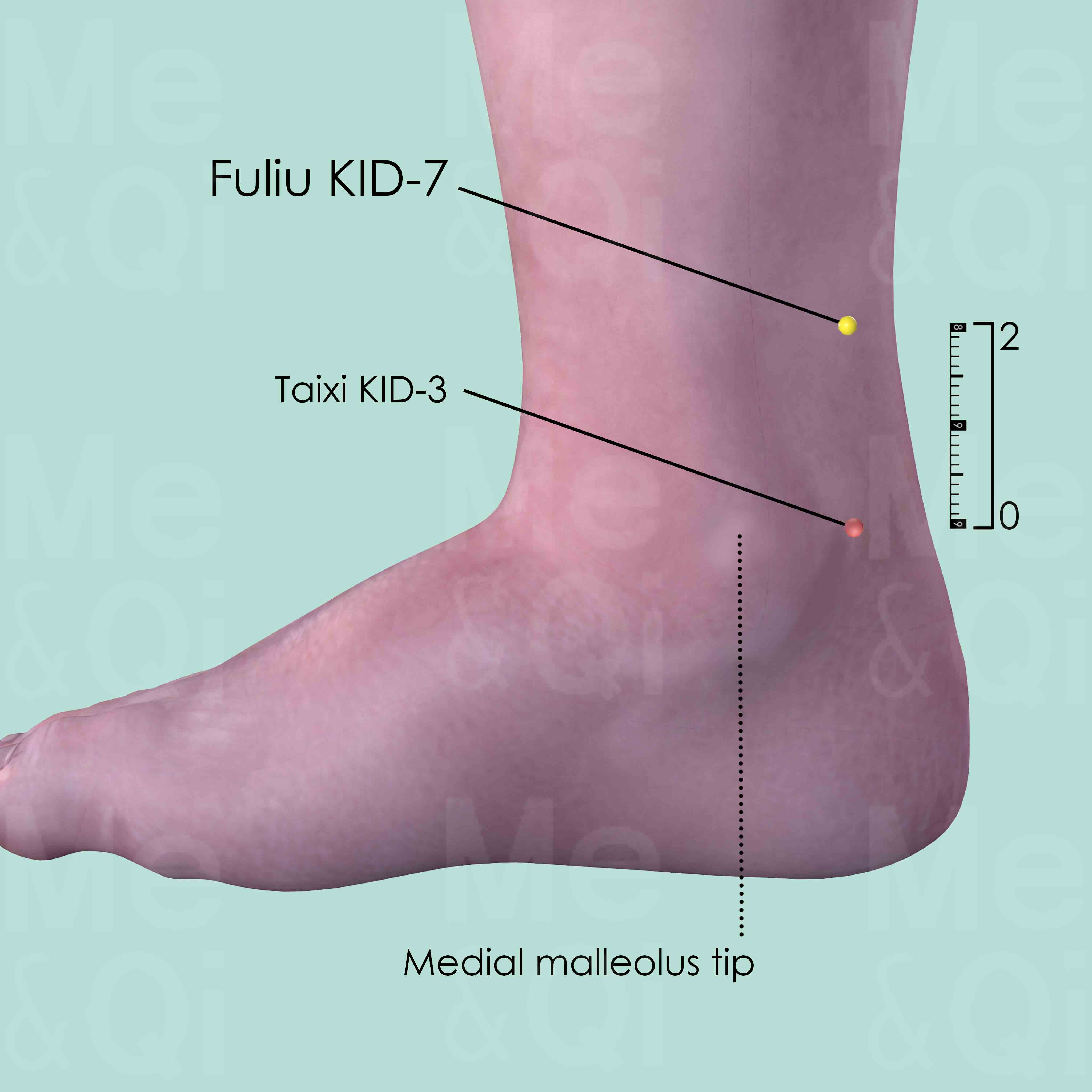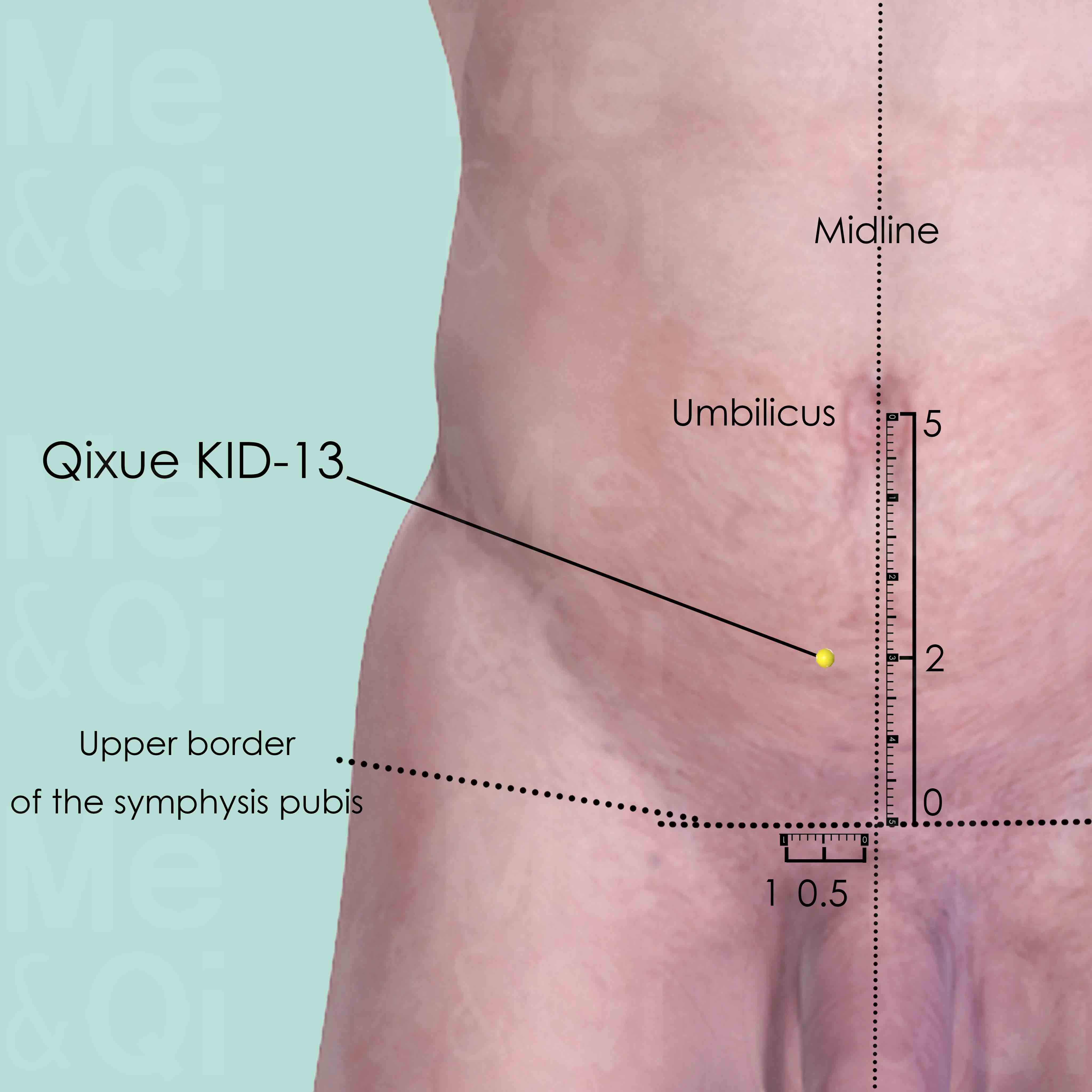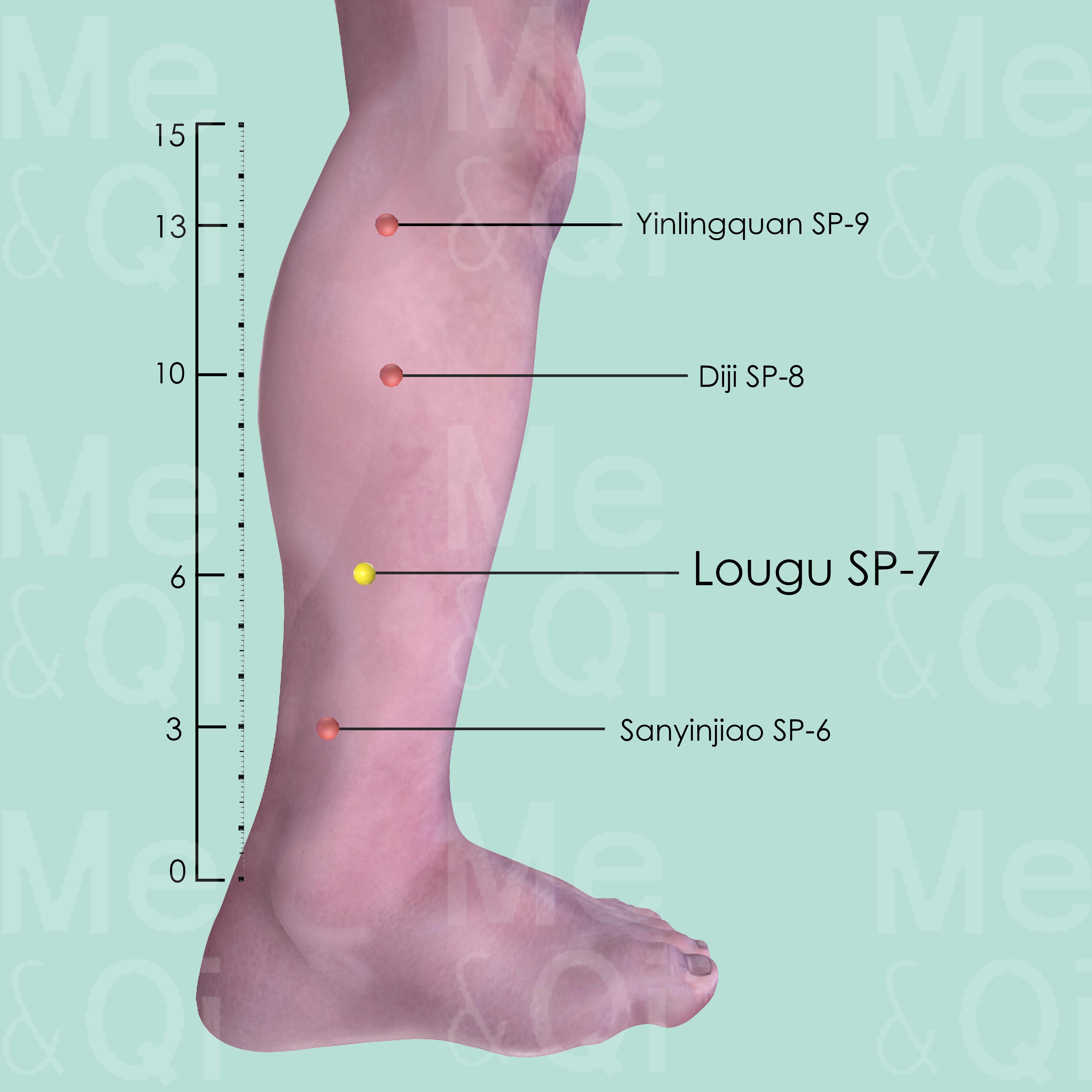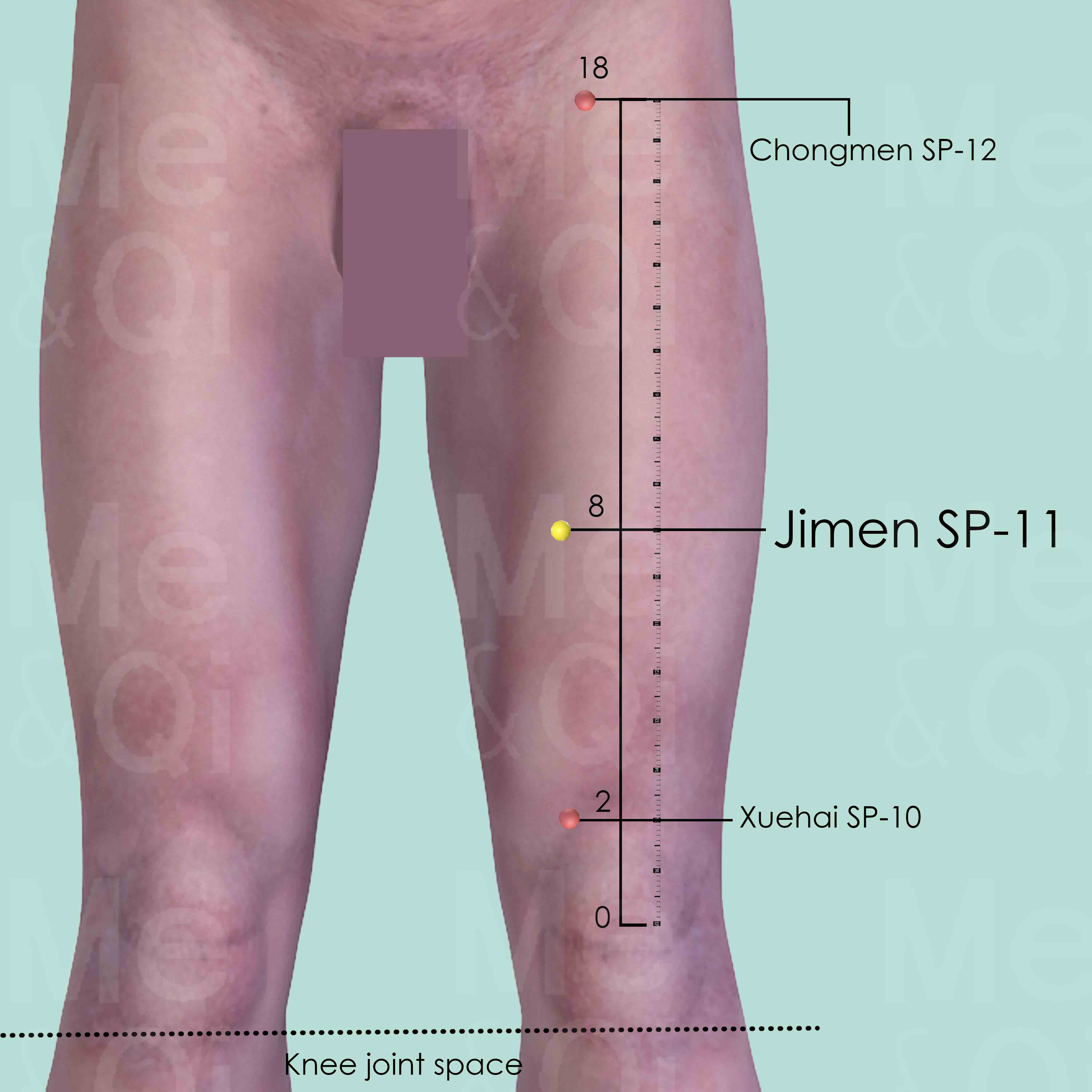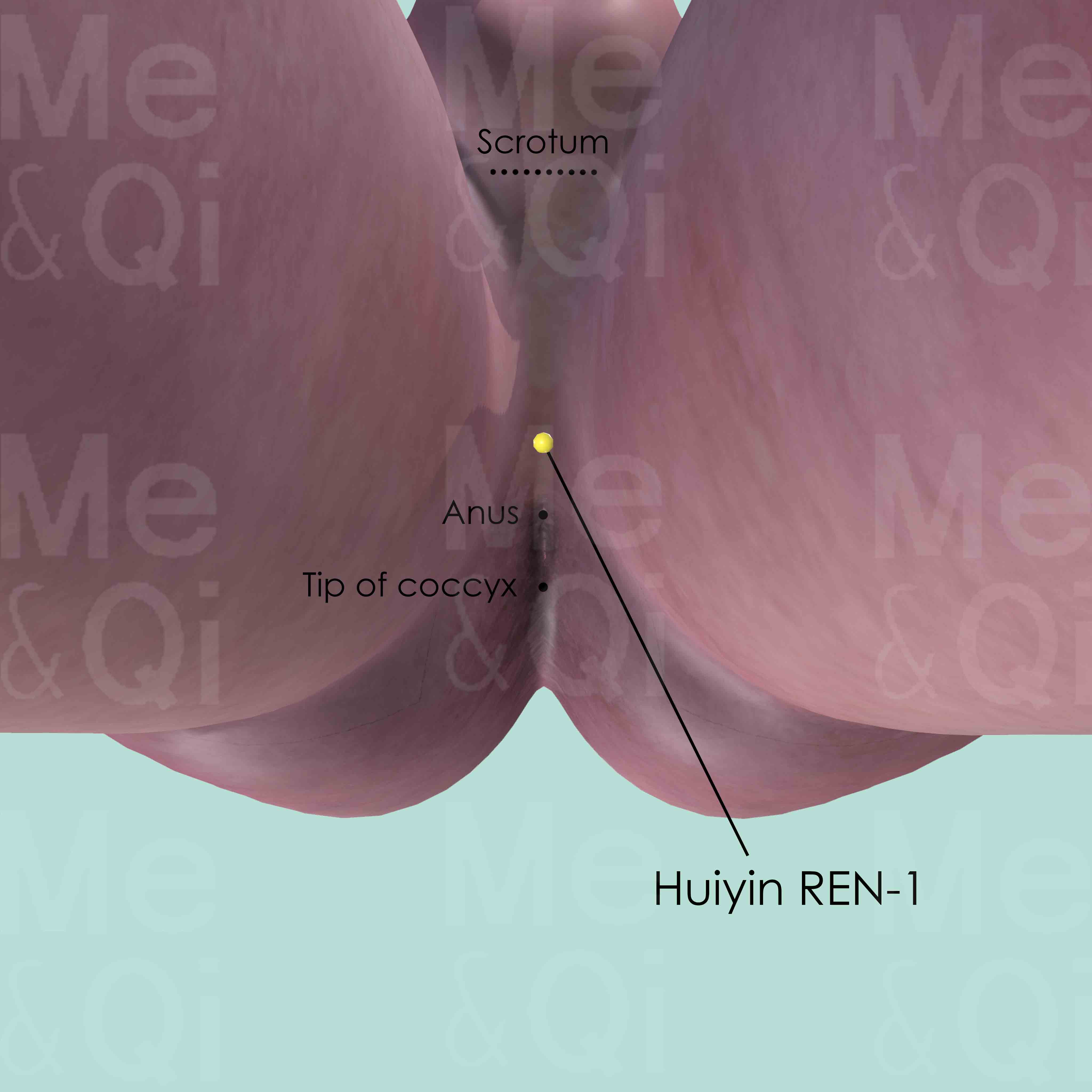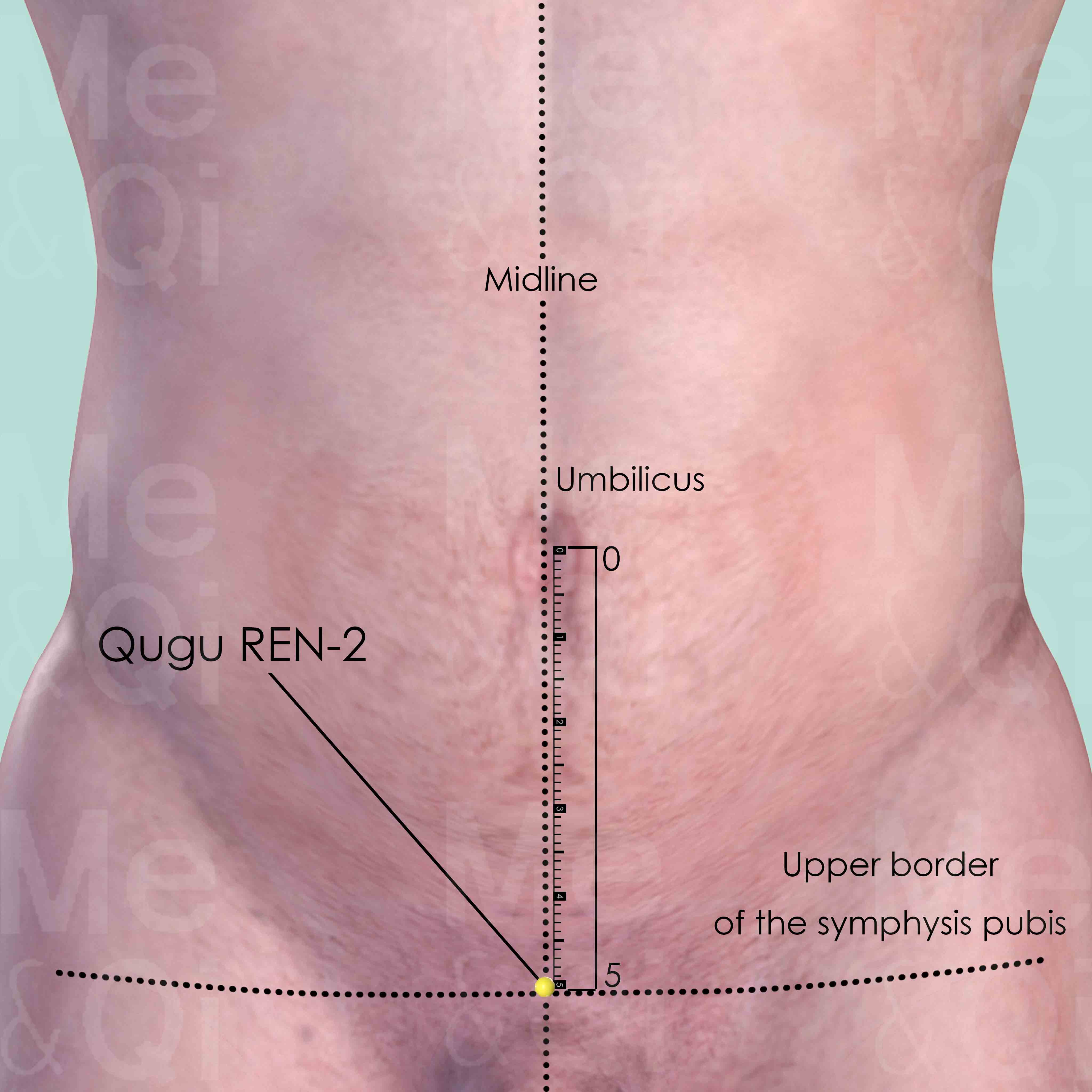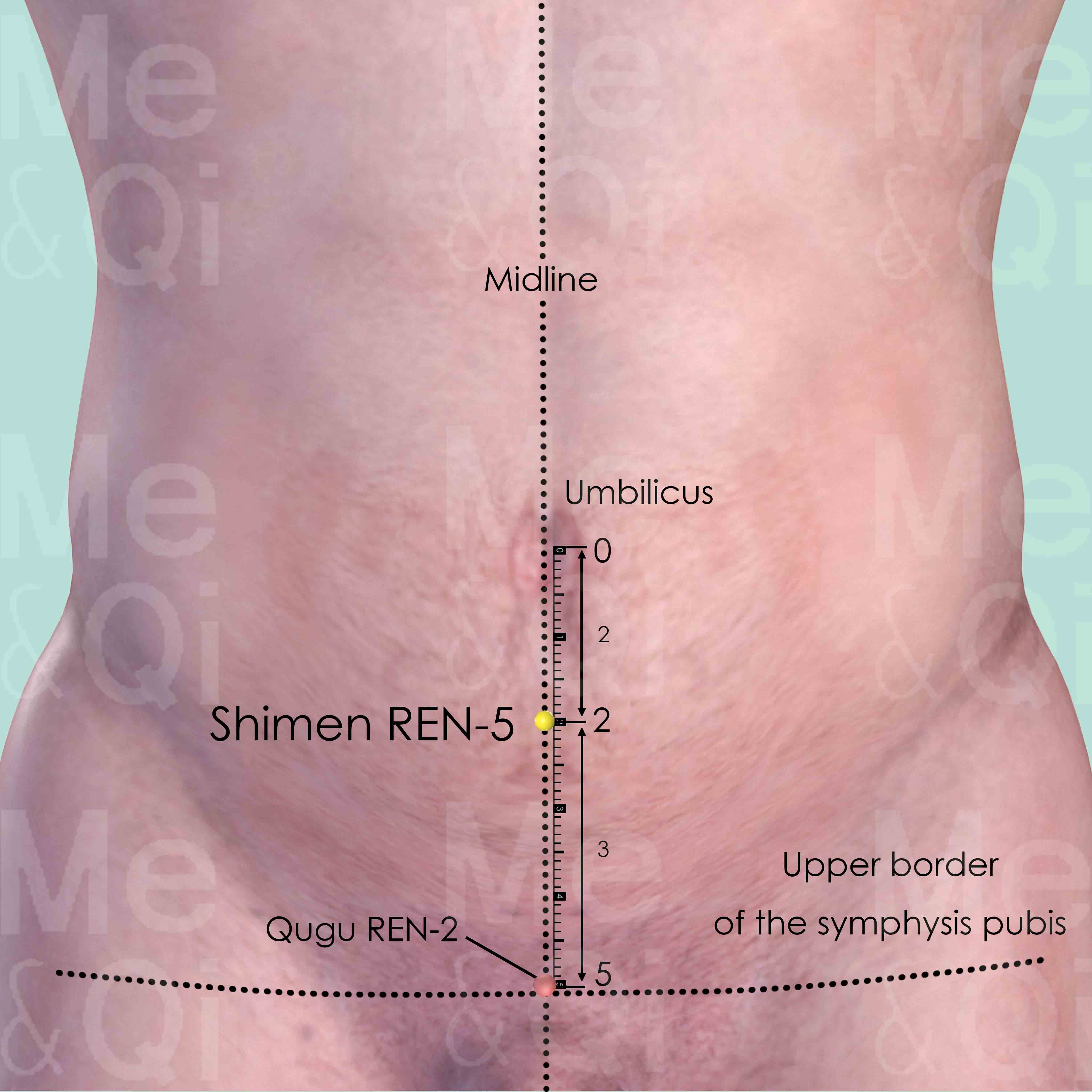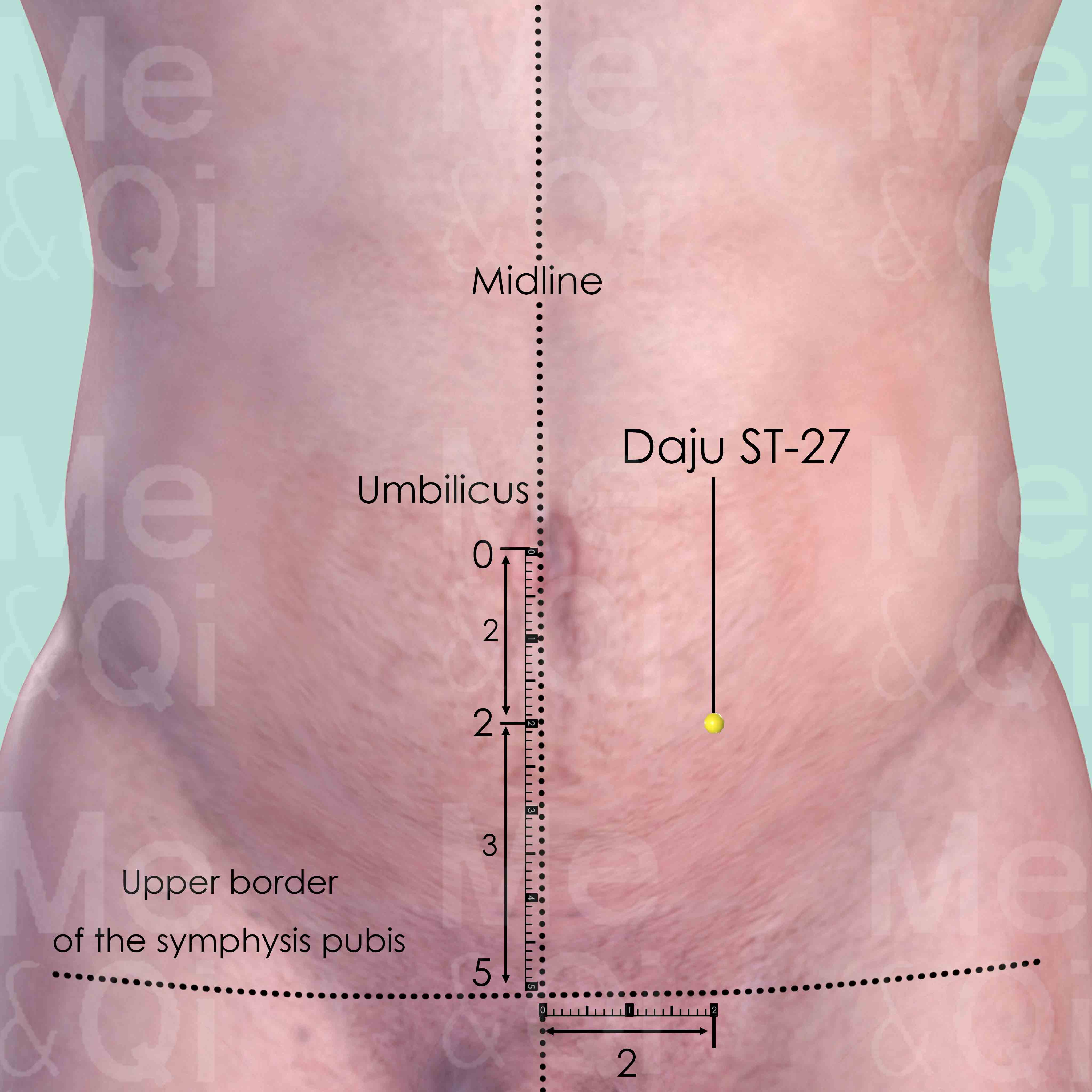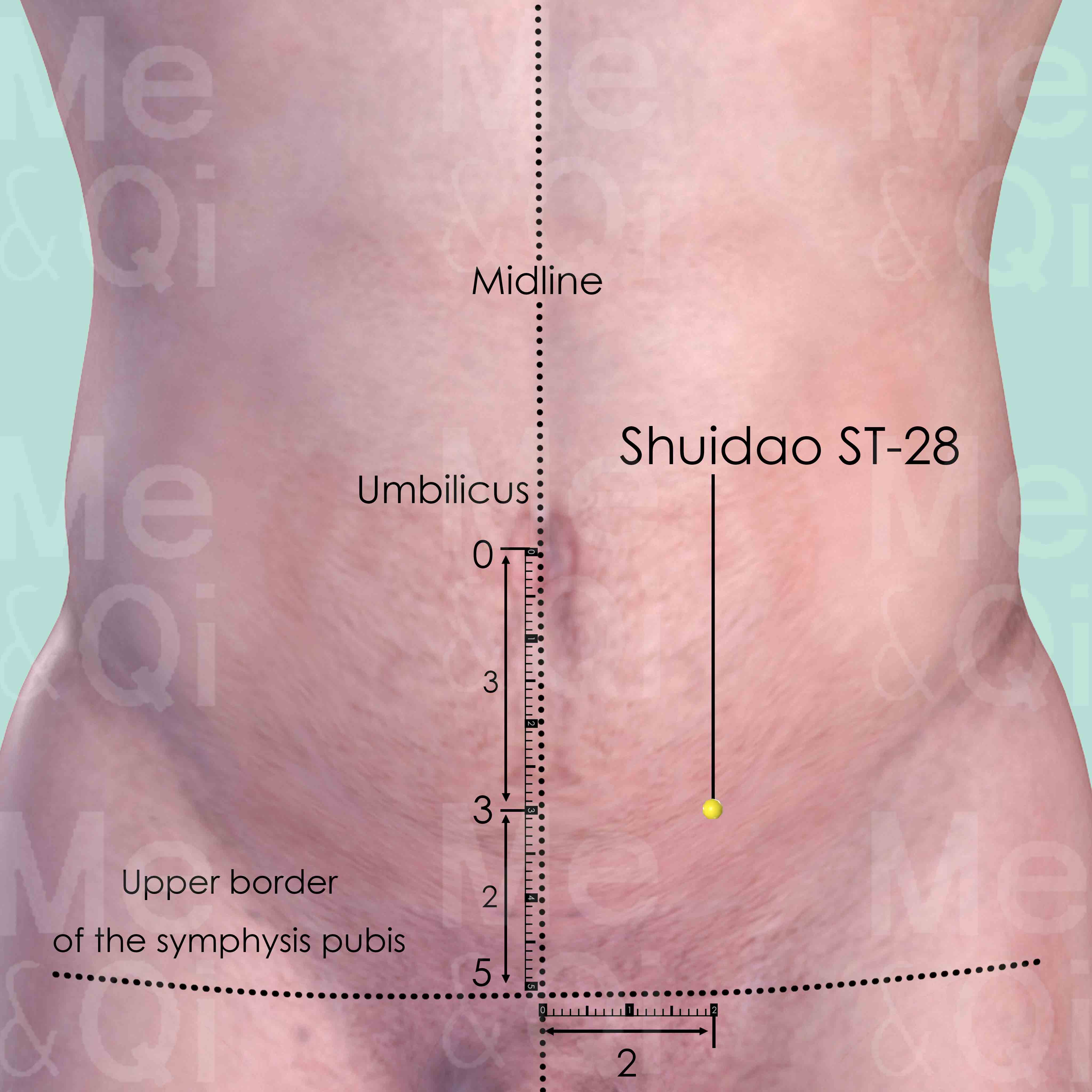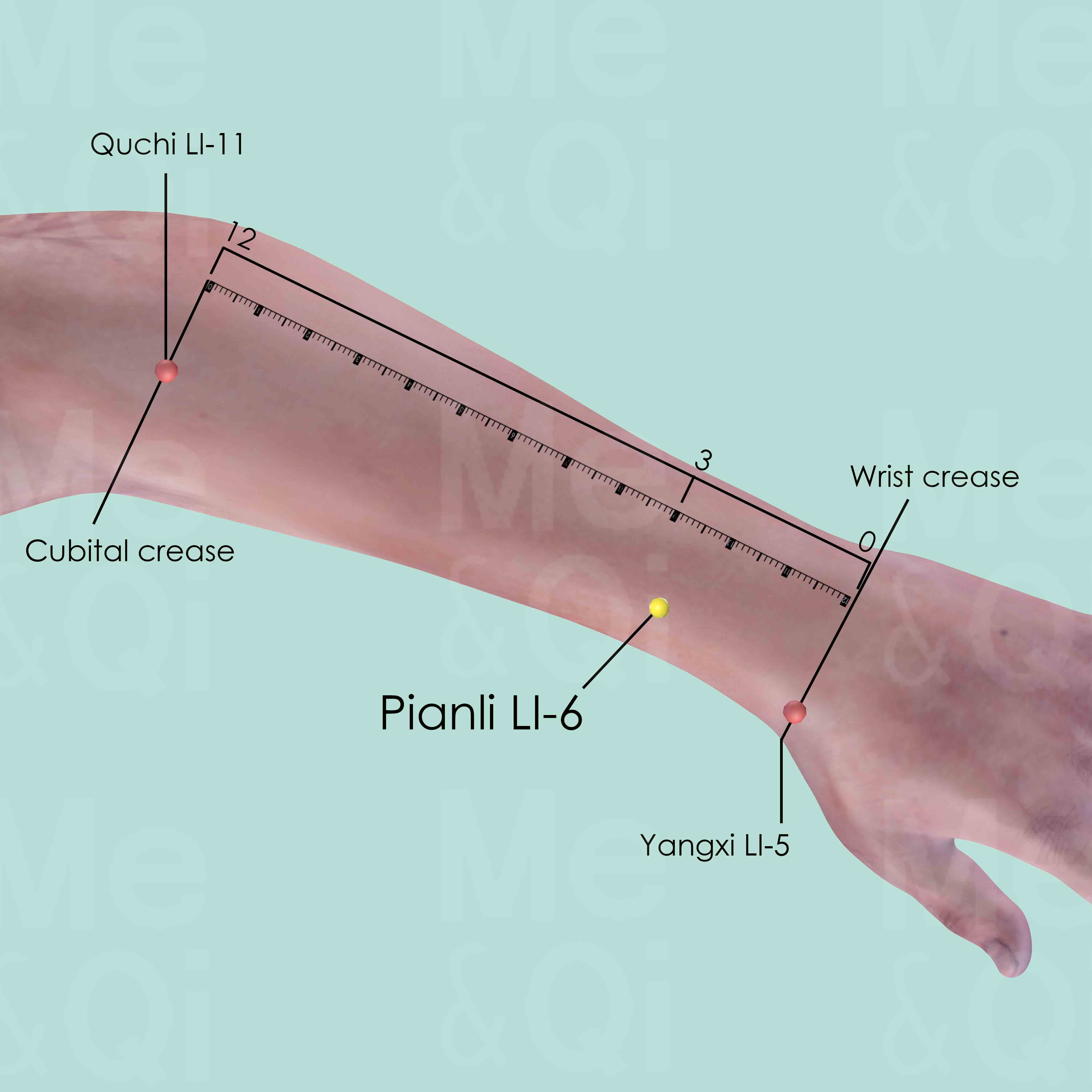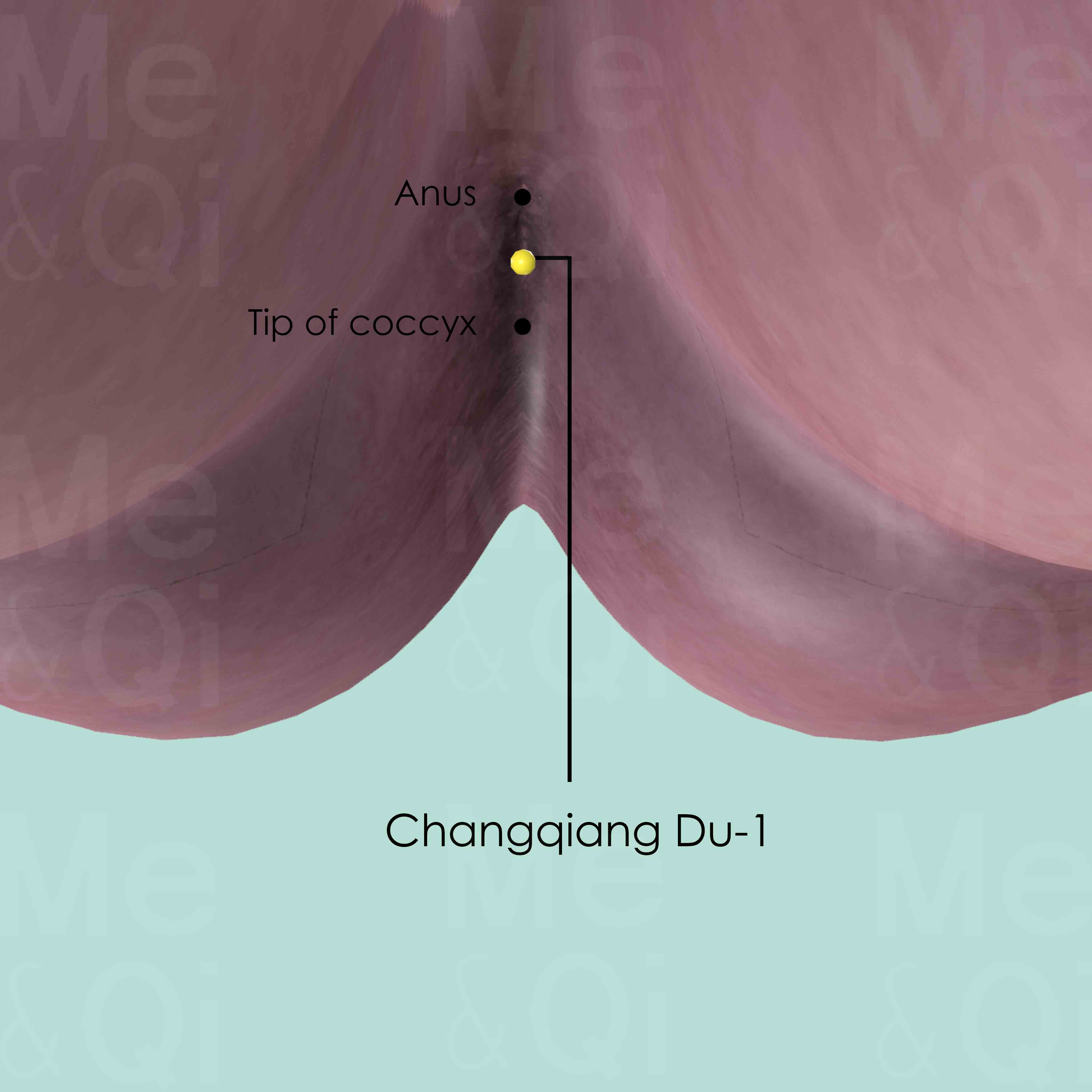Urinary Dysfunctionaccording to TCM
Symptom family: Urinary Incontinence and Dysfunction
Sub-symptom(s): Edema With Urinary Dysfunction
What is Urinary Dysfunction?
Urinary dysfunction encompasses a range of difficulties related to urination, including but not limited to, the inability to urinate smoothly, a feeling of incomplete bladder emptying, or the presence of pain during urination. These symptoms not only cause physical discomfort but also affect the psychological well-being and quality of life of those afflicted.
How Does TCM View Urinary Dysfunction?
Traditional Chinese Medicine interprets urinary dysfunction as a manifestation of deeper imbalances within the body's systems. According to TCM, the Kidneys play a crucial role in the filtration and excretion processes, and any dysfunction is often related to disharmonies in Didney energy, as well as imbalances in the body's Qi (vital energy), Yin and Yang, dampness, and heat. Identifying the specific TCM pattern behind the symptoms is key to tailoring treatment strategies.
Root Causes of Urinary Dysfunction in TCM
TCM recognizes various patterns that can lead to urinary dysfunction, with Dampness and Heat being central to many of these. For instance, Damp-Heat in the Liver can lead to symptoms such as urinary difficulty and abdominal fullness.
Similarly, Oedema, marked by swelling and fluid retention, often involves urinary challenges. Phlegm accumulation, another pattern, can obstruct urinary functions, leading to dysfunction. Additionally, Yang Deficiency, particularly of the kidney, can impair the warming and functional activities necessary for proper urination.
Explore below more details about what might cause Urinary dysfunction according to TCM.
- By Syndrome
- By Organ
- Dampness
- Phlegm
- Yang Deficiency
- Heat
- Wind
- Summer Heat
- Qi Deficiency
- Cold
- View More Causes
- Kidney
- Spleen
- Liver
- Gallbladder
- View More Organs
Dampness
"Dampness" in TCM is a concept that describes a pattern of disharmony where the body accumulates excess moisture. Imagine the heavy, sticky feeling you get on a very humid day; that's similar to what dampness feels like internally. It can manifest as a sense of heaviness, bloating, sluggishness, or even a foggy mind. This condition is often thought to arise from environmental factors like living in a damp place, dietary habits that promote moisture in the body, or internal imbalances that hinder the body's ability to process fluids properly. In TCM, dampness can obstruct the normal flow of energy and fluids in the body, leading to various symptoms.... see more
Dampness Patterns That Can Lead to Urinary Dysfunction
Common Symptoms: Feeling Of Heaviness Dark Urine Lack Of Appetite Vaginal Itching Fever Edema Ascites Diarrhea
| Pattern Name | Relevant Symptoms | Relevant Formulas |
|---|---|---|
| Damp-Heat in the Liver | Urinary difficulty, Hypochondrial fullness with warmth relief, Abdominal fullness, Lower abdominal fullness, Bitter taste in the mouth, Sticky taste in the mouth, Lack of appetite, Nausea, Feeling of heaviness, Yellow vaginal discharge, Vaginal itching, Vulvar eczema, Vulvar sores, Bleeding between periods, Midcycle bleeding pain, Red and swollen scrotum, Red and swelling genital, Papules, Itchy vesicular rashes, Urinary dysfunction, Urinary burning, Dark urine... see more | Long Dan Xie Gan Tang | Yin Chen Hao Tang |
| Oedema | Urinary difficulty, Abdominal edema, Ankle edema, Facial edema, Foot edema, Oedema of hands, Leg edema, Ocular swelling, Abdominal distention... see more | Fang Ji Huang Qi Tang | Wu Ling San | Ping Wei San | Wu Pi Yin | Ling Gui Zhu Gan Tang | Zhen Wu Tang | Shen Qi Wan | Yu Gong San | Zhou Che Wan |
| Early Stage Summerheat with Exterior Wind-Cold | Rough urination, Fever, Chills, Lack of sweating, Headaches, Thirst, Flushed face, Stifling sensation in the chest, Feeling of heaviness, Body pain, Dark urine, Urinary dysfunction... see more | Xin Jia Xiang Ru Yin |
| Wind-Damp | Urinary difficulty, Perspiration, Feeling of heaviness, Edema, Urinary dysfunction, Ascites, Rheumatic heart disease, Rheumatoid arthritis, Acute glomerulonephritis, Lumbar disc disease... see more | Fang Ji Huang Qi Tang |
| Spleen Deficiency with Dampness | Urinary difficulty, Edema, Feeling of heaviness, Diarrhea, Urinary dysfunction, Glomerulonephritis, Kidney infection, Nephrotic syndrome, Cystitis, Hydrocele, Migraine... see more | Wu Ling San |
Phlegm
In TCM "Phlegm" as a pattern of disharmony is a complex concept that extends beyond the physical manifestation of mucus. It represents a pathological factor that can disrupt the flow of Qi (vital energy) and blood, leading to various health issues. Phlegm in TCM is seen as a sticky, turbid substance arising from the body's inability to metabolize fluids properly, often due to a dysfunction of the spleen. It's not only associated with respiratory problems like cough and congestion but also with systemic issues. Symptoms can include a feeling of heaviness, mental cloudiness, dizziness, and in some cases, the formation of lumps or masses. Phlegm can even be "invisible," contributing to emotional disturbances like depression or stress. ... see more
Phlegm Patterns That Can Lead to Urinary Dysfunction
Common Symptoms: Feeling Of Heaviness Back Pain Abdominal Edema Ankle Edema Facial Edema Foot Edema Oedema Of Hands Leg Edema
| Pattern Name | Relevant Symptoms | Relevant Formulas |
|---|---|---|
| Oedema | Urinary difficulty, Abdominal edema, Ankle edema, Facial edema, Foot edema, Oedema of hands, Leg edema, Ocular swelling, Abdominal distention... see more | Fang Ji Huang Qi Tang | Wu Ling San | Ping Wei San | Wu Pi Yin | Ling Gui Zhu Gan Tang | Zhen Wu Tang | Shen Qi Wan | Yu Gong San | Zhou Che Wan |
| Phlegm in Kidneys or Gallbladder | Urinary difficulty, Frequent and urgent urination, Urinary dysfunction, Hematuria | Si Ni San | Pai Shi Tang |
| Phlegm-Fluids in the limbs | Urinary difficulty, Feeling of heaviness, Muscle pain, Lack of sweating, Absence of thirst, Profuse white sputum, Swollen limbs, Urinary dysfunction... see more | Da Qing Long Tang | Xiao Qing Long Tang |
Yang Deficiency
Yang deficiency in TCM refers to a state where the body's Yang energy, which is responsible for warmth, activity, and function, is weakened or diminished. This pattern of disharmony often arises from chronic illness, aging, or inherent constitutional weakness. Symptoms of Yang deficiency are typically associated with cold and sluggishness, such as a feeling of coldness, cold extremities, pale complexion, low energy or fatigue, and a desire for warmth. Digestive issues like poor appetite, loose stools, and water retention can also be indicative of Yang deficiency.... see more
Yang Deficiency Patterns That Can Lead to Urinary Dysfunction
Common Symptoms: Dizziness Tinnitus Chills Generalized Fatigue Diarrhea Depression Frequent Urination Coughing
| Pattern Name | Relevant Symptoms | Relevant Formulas |
|---|---|---|
| Kidney Yang Deficiency | Urinary difficulty, Lower back pain, Dizziness, Tinnitus, Weak and cold knees, Lower back coldness, Chills, Weak legs, Bright pale face, Generalized fatigue, General weakness, Leg edema, Female infertility, Diarrhea, Depression, Erectile dysfunction, Premature ejaculation, Oligospermia, Low sex drive, Pale and abudant urination, Constipation... see more | Ji Sheng Shen Qi Wan | Shen Qi Wan |
| Spleen or Kidney Yang Deficiency | Urinary difficulty, Abdominal pain that worsens with cold, Urinary dysfunction, Deep pain and heaviness in limbs, Dizziness, Heavy sensation in the head, Edema, Diarrhea, Palpitations, Coughing, Vomit... see more | Zhen Wu Tang |
Heat
In TCM "Heat" signifies an excess of Yang energy, leading to an imbalance where heat predominates over the body's cool Yin aspects. This condition is metaphorically akin to an internal over-heating. Symptoms indicative of Heat can include feelings of warmth, fever, sweating, irritability, red face, thirst with a preference for cold drinks, and a rapid pulse. The tongue may appear red with a yellow coating. Unlike the common interpretation of heat in terms of temperature, in TCM, it represents a state of hyperactivity or inflammation in the body.... see more
Heat Patterns That Can Lead to Urinary Dysfunction
Common Symptoms: Feeling Of Heaviness Dark Urine Fever Hypochondrial Fullness With Warmth Relief Abdominal Fullness Lower Abdominal Fullness Bitter Taste In The Mouth Sticky Taste In The Mouth
| Pattern Name | Relevant Symptoms | Relevant Formulas |
|---|---|---|
| Damp-Heat in the Liver | Urinary difficulty, Hypochondrial fullness with warmth relief, Abdominal fullness, Lower abdominal fullness, Bitter taste in the mouth, Sticky taste in the mouth, Lack of appetite, Nausea, Feeling of heaviness, Yellow vaginal discharge, Vaginal itching, Vulvar eczema, Vulvar sores, Bleeding between periods, Midcycle bleeding pain, Red and swollen scrotum, Red and swelling genital, Papules, Itchy vesicular rashes, Urinary dysfunction, Urinary burning, Dark urine... see more | Long Dan Xie Gan Tang | Yin Chen Hao Tang |
| Early Stage Summerheat with Exterior Wind-Cold | Rough urination, Fever, Chills, Lack of sweating, Headaches, Thirst, Flushed face, Stifling sensation in the chest, Feeling of heaviness, Body pain, Dark urine, Urinary dysfunction... see more | Xin Jia Xiang Ru Yin |
Wind
In TCM "Wind" is a concept that represents a pattern of disharmony, often characterized by its sudden and unpredictable nature, much like a gusty wind changing direction without warning. This pattern is associated with symptoms that come and go quickly or move around the body, such as itching, tremors, or even certain types of pain. Wind is considered to be a primary cause of illnesses that have these rapidly changing characteristics. In TCM, external Wind often refers to illnesses that start suddenly, like the common cold, believed to be caused by external pathogenic factors like climatic changes. On the other hand, internal Wind can be linked to internal imbalances and can manifest in conditions like dizziness or spasms. ... see more
Wind Patterns That Can Lead to Urinary Dysfunction
Common Symptoms: Feeling Of Heaviness Perspiration Edema Ascites Rheumatic Heart Disease Rheumatoid Arthritis Acute Glomerulonephritis Lumbar Disc Disease
| Pattern Name | Relevant Symptoms | Relevant Formulas |
|---|---|---|
| Early Stage Summerheat with Exterior Wind-Cold | Rough urination, Fever, Chills, Lack of sweating, Headaches, Thirst, Flushed face, Stifling sensation in the chest, Feeling of heaviness, Body pain, Dark urine, Urinary dysfunction... see more | Xin Jia Xiang Ru Yin |
| Wind-Damp | Urinary difficulty, Perspiration, Feeling of heaviness, Edema, Urinary dysfunction, Ascites, Rheumatic heart disease, Rheumatoid arthritis, Acute glomerulonephritis, Lumbar disc disease... see more | Fang Ji Huang Qi Tang |
Summer Heat
"Summer-Heat" in TCM is a unique concept that refers to a pattern of disharmony often associated with the hot summer months. Imagine the intense heat of summer stressing your body, like being in a sweltering, humid environment for too long. This can lead to symptoms like feeling overheated, excessive sweating, a feeling of irritation, and sometimes even nausea or dizziness. In TCM, this condition is thought to arise from the external environment's heat affecting the body's internal balance. It's similar to how we might feel uncomfortable and out of sorts on a very hot day. ... see more
Summer Heat Patterns That Can Lead to Urinary Dysfunction
Common Symptoms: Fever Headaches Feeling Of Heaviness Thirst Aversion To Cold Perspiration Upper Abdominal Discomfort Irritability
| Pattern Name | Relevant Symptoms | Relevant Formulas |
|---|---|---|
| Summer-Heat | Urinary difficulty, Fever, Aversion to cold, Perspiration, Headaches, Feeling of heaviness, Upper abdominal discomfort, Irritability, Thirst... see more | Liu Yi San |
| Early Stage Summerheat with Exterior Wind-Cold | Rough urination, Fever, Chills, Lack of sweating, Headaches, Thirst, Flushed face, Stifling sensation in the chest, Feeling of heaviness, Body pain, Dark urine, Urinary dysfunction... see more | Xin Jia Xiang Ru Yin |
Qi Deficiency
Qi Deficiency in TCM is like running low on battery power. Qi is the vital energy that powers every function in your body. When there's a Qi Deficiency, it means your body doesn't have enough of this essential energy. This can make you feel tired all the time, weak, or even cause shortness of breath. It's similar to how you feel when you haven't had enough sleep or nutritious food. Your body just doesn't have the energy it needs to perform at its best. Unlike modern medicine, which often focuses on specific physical causes for fatigue and weakness, TCM views Qi Deficiency as an overall energy depletion that affects your entire well-being, and it seeks to replenish and balance this vital energy.... see more
Qi Deficiency Patterns That Can Lead to Urinary Dysfunction
| Pattern Name | Relevant Symptoms | Relevant Formulas |
|---|---|---|
| Spleen Deficiency with Dampness | Urinary difficulty, Edema, Feeling of heaviness, Diarrhea, Urinary dysfunction, Glomerulonephritis, Kidney infection, Nephrotic syndrome, Cystitis, Hydrocele, Migraine... see more | Wu Ling San |
Cold
In TCM "Cold" as a pattern of disharmony refers to a specific type of imbalance within the body's systems, often linked to a deficiency or weakness. It's not about feeling physically cold or having a common cold, but rather a metaphorical description of certain symptoms and underlying conditions. When a TCM practitioner says someone suffers from "Cold," it usually implies that the body's Yang energy, which is warm and active, is insufficient or overpowered by Yin energy, which is cool and passive. Symptoms of Cold in TCM can include a general feeling of coldness, cold limbs, pale complexion, low energy, slow metabolism, and a preference for warmth. ... see more
Cold Patterns That Can Lead to Urinary Dysfunction
| Pattern Name | Relevant Symptoms | Relevant Formulas |
|---|---|---|
| Early Stage Summerheat with Exterior Wind-Cold | Rough urination, Fever, Chills, Lack of sweating, Headaches, Thirst, Flushed face, Stifling sensation in the chest, Feeling of heaviness, Body pain, Dark urine, Urinary dysfunction... see more | Xin Jia Xiang Ru Yin |
Kidney
In TCM the Kidneys are regarded as the body's most fundamental reservoir of Essence, known as Jing, which influences growth, reproduction, and aging. They are not just organs for filtering blood, but a holistic system governing vital life forces. When the Kidneys malfunction in TCM, it can manifest as a variety of health issues, such as chronic fatigue, reproductive problems, imbalances in fluid metabolism leading to edema or dryness, lower back pain, and a sense of fear or insecurity.... see more
Kidney Patterns That Can Lead to Urinary Dysfunction
Common Symptoms: Back Pain Dizziness Tinnitus Chills Generalized Fatigue Diarrhea Depression Abdominal Pain
| Pattern Name | Relevant Symptoms | Relevant Formulas |
|---|---|---|
| Kidney Yang Deficiency | Urinary difficulty, Lower back pain, Dizziness, Tinnitus, Weak and cold knees, Lower back coldness, Chills, Weak legs, Bright pale face, Generalized fatigue, General weakness, Leg edema, Female infertility, Diarrhea, Depression, Erectile dysfunction, Premature ejaculation, Oligospermia, Low sex drive, Pale and abudant urination, Constipation... see more | Ji Sheng Shen Qi Wan | Shen Qi Wan |
| Phlegm in Kidneys or Gallbladder | Urinary difficulty, Frequent and urgent urination, Urinary dysfunction, Hematuria | Si Ni San | Pai Shi Tang |
| Spleen or Kidney Yang Deficiency | Urinary difficulty, Abdominal pain that worsens with cold, Urinary dysfunction, Deep pain and heaviness in limbs, Dizziness, Heavy sensation in the head, Edema, Diarrhea, Palpitations, Coughing, Vomit... see more | Zhen Wu Tang |
Spleen
In TCM the Spleen plays a vital role in digestion and transformation, converting food into energy and nutrients, and overseeing the distribution of Qi and Blood. It's also crucial in maintaining the health of muscles and limbs and ensuring the blood remains within the vessels. When the Spleen malfunctions in TCM, it can lead to a variety of issues such as digestive disorders, fatigue, weak muscles, bloating, and a feeling of heaviness. It can also cause a pale complexion, poor appetite, and a tendency to bruise easily. Emotionally, a Spleen imbalance is often associated with excessive worry or overthinking, reflecting its role in the interplay between physical and mental health.... see more
Spleen Patterns That Can Lead to Urinary Dysfunction
Common Symptoms: Edema Diarrhea Trigeminal Neuralgia Congestive Heart Failure Generalized Fatigue Feeling Of Heaviness Glomerulonephritis Kidney Infection
| Pattern Name | Relevant Symptoms | Relevant Formulas |
|---|---|---|
| Spleen Deficiency with Dampness | Urinary difficulty, Edema, Feeling of heaviness, Diarrhea, Urinary dysfunction, Glomerulonephritis, Kidney infection, Nephrotic syndrome, Cystitis, Hydrocele, Migraine... see more | Wu Ling San |
| Spleen or Kidney Yang Deficiency | Urinary difficulty, Abdominal pain that worsens with cold, Urinary dysfunction, Deep pain and heaviness in limbs, Dizziness, Heavy sensation in the head, Edema, Diarrhea, Palpitations, Coughing, Vomit... see more | Zhen Wu Tang |
Liver
In TCM the Liver is viewed as the organ responsible for the smooth flow of Qi, Blood, and emotions throughout the body. It plays a key role in regulating mood, storing blood, supporting digestion, and ensuring the health of tendons and eyes. When the Liver malfunctions or is imbalanced in TCM, it can lead to a range of issues such as irritability, mood swings, menstrual irregularities, eye problems, and muscular stiffness or pain. A malfunctioning Liver in TCM reflects not only physical disturbances but also emotional and mental disharmony, emphasizing the holistic approach of TCM in addressing health and wellness.... see more
Liver Patterns That Can Lead to Urinary Dysfunction
| Pattern Name | Relevant Symptoms | Relevant Formulas |
|---|---|---|
| Damp-Heat in the Liver | Urinary difficulty, Hypochondrial fullness with warmth relief, Abdominal fullness, Lower abdominal fullness, Bitter taste in the mouth, Sticky taste in the mouth, Lack of appetite, Nausea, Feeling of heaviness, Yellow vaginal discharge, Vaginal itching, Vulvar eczema, Vulvar sores, Bleeding between periods, Midcycle bleeding pain, Red and swollen scrotum, Red and swelling genital, Papules, Itchy vesicular rashes, Urinary dysfunction, Urinary burning, Dark urine... see more | Long Dan Xie Gan Tang | Yin Chen Hao Tang |
Gallbladder
In TCM the Gallbladder has a unique role in storing and excreting bile, but more importantly, it's seen as crucial for decision-making and courage. It's closely connected to the Liver, assisting in the smooth flow of Qi (vital energy) and supporting the Liver's role in maintaining emotional balance. When the Gallbladder malfunctions or is imbalanced in TCM, it can lead to physical symptoms like gallstones, jaundice, or a bitter taste in the mouth. There might also be digestive disturbances, particularly related to fat metabolism. On an emotional level, a Gallbladder disorder can manifest as indecisiveness, timidity, or a tendency to easily succumb to stress. These symptoms highlight the TCM view of the Gallbladder as integral to both physical processes and emotional resilience.... see more
Gallbladder Patterns That Can Lead to Urinary Dysfunction
| Pattern Name | Relevant Symptoms | Relevant Formulas |
|---|---|---|
| Phlegm in Kidneys or Gallbladder | Urinary difficulty, Frequent and urgent urination, Urinary dysfunction, Hematuria | Si Ni San | Pai Shi Tang |
TCM Herbal Formulas for Urinary Dysfunction
To address Damp-Heat in the Liver, TCM practitioners might prescribe Long Dan Xie Gan Tang, a formula designed to clear Heat and dry Dampness.
For conditions involving Oedema and associated urinary difficulty, Fang Ji Huang Qi Tang might be utilized to promote urination and leach out dampness, thereby alleviating swelling and improving urine flow. These examples illustrate the precision with which TCM targets the underlying patterns of disharmony.
Explore below some TCM herbal formulas used to address urinary dysfunction, organized by cause and by formula type.
- By Cause
- By Formula Type
- Dampness
- Phlegm
- Yang Deficiency
- Heat
- Wind
- Summer Heat
- Qi Deficiency
- Cold
- View More Causes
- Formulas that promote urination and leach out dampness
- Formulas that warm yang and tonify
- Formulas that clear heat and expel dampness
- Formulas that warm and transform water and dampness
- Formulas that drive out excess water
- Formulas that clear wind-Cold
- Formulas that tonify blood
- Formulas that clear heat from the organs
- Formulas that dispel summer-Heat and facilitate resolution of dampness
- Formulas that transform dampness and harmonize stomach
- Formulas that harmonize liver-Spleen
- Formulas that dispel summer-Heat and resolve exterior
Top Formula for Dampness:
Fang Ji Huang Qi Tang
Suitable for Dampness patterns that may cause urinary dysfunction, such as Wind-Damp or Oedema
Learn moreAll Formulas Recommended for Urinary Dysfunction Caused by Dampness
| Formula | Patterns Suitable For |
|---|---|
| Fang Ji Huang Qi Tang | Wind-Damp, Oedema |
| Wu Ling San | Oedema, Spleen Deficiency with Dampness |
| Zhen Wu Tang | Oedema |
| Shen Qi Wan | Oedema |
| Long Dan Xie Gan Tang | Damp-Heat in the Liver |
| Yin Chen Hao Tang | Damp-Heat in the Liver |
| Ping Wei San | Oedema |
| Wu Pi Yin | Oedema |
| Ling Gui Zhu Gan Tang | Oedema |
| Yu Gong San | Oedema |
| Zhou Che Wan | Oedema |
| Xin Jia Xiang Ru Yin | Early Stage Summerheat with Exterior Wind-Cold |
Top Formula for Phlegm:
Fang Ji Huang Qi Tang
Suitable for Phlegm patterns that may cause urinary dysfunction, such as Oedema
Learn moreAll Formulas Recommended for Urinary Dysfunction Caused by Phlegm
| Formula | Patterns Suitable For |
|---|---|
| Fang Ji Huang Qi Tang | Oedema |
| Wu Ling San | Oedema |
| Zhen Wu Tang | Oedema |
| Shen Qi Wan | Oedema |
| Ping Wei San | Oedema |
| Wu Pi Yin | Oedema |
| Ling Gui Zhu Gan Tang | Oedema |
| Yu Gong San | Oedema |
| Zhou Che Wan | Oedema |
| Si Ni San | Phlegm in Kidneys or Gallbladder |
| Pai Shi Tang | Phlegm in Kidneys or Gallbladder |
| Da Qing Long Tang | Phlegm-Fluids in the limbs |
| Xiao Qing Long Tang | Phlegm-Fluids in the limbs |
Top Formula for Yang Deficiency:
Shen Qi Wan
Suitable for Yang Deficiency patterns that may cause urinary dysfunction, such as Kidney Yang Deficiency
Learn moreAll Formulas Recommended for Urinary Dysfunction Caused by Yang Deficiency
| Formula | Patterns Suitable For |
|---|---|
| Shen Qi Wan | Kidney Yang Deficiency |
| Zhen Wu Tang | Spleen or Kidney Yang Deficiency |
| Ji Sheng Shen Qi Wan | Kidney Yang Deficiency |
Top Formula for Heat:
Long Dan Xie Gan Tang
Suitable for Heat patterns that may cause urinary dysfunction, such as Damp-Heat in the Liver
Learn moreAll Formulas Recommended for Urinary Dysfunction Caused by Heat
| Formula | Patterns Suitable For |
|---|---|
| Long Dan Xie Gan Tang | Damp-Heat in the Liver |
| Yin Chen Hao Tang | Damp-Heat in the Liver |
| Xin Jia Xiang Ru Yin | Early Stage Summerheat with Exterior Wind-Cold |
Top Formula for Wind:
Fang Ji Huang Qi Tang
Suitable for Wind patterns that may cause urinary dysfunction, such as Wind-Damp
Learn moreAll Formulas Recommended for Urinary Dysfunction Caused by Wind
| Formula | Patterns Suitable For |
|---|---|
| Fang Ji Huang Qi Tang | Wind-Damp |
| Xin Jia Xiang Ru Yin | Early Stage Summerheat with Exterior Wind-Cold |
Top Formula for Summer Heat:
Liu Yi San
Suitable for Summer Heat patterns that may cause urinary dysfunction, such as Summer-Heat
Learn moreAll Formulas Recommended for Urinary Dysfunction Caused by Summer Heat
| Formula | Patterns Suitable For |
|---|---|
| Liu Yi San | Summer-Heat |
| Xin Jia Xiang Ru Yin | Early Stage Summerheat with Exterior Wind-Cold |
Top Formula for Qi Deficiency:
Wu Ling San
Suitable for Qi Deficiency patterns that may cause urinary dysfunction, such as Spleen Deficiency with Dampness
Learn moreTop Formula for Cold:
Xin Jia Xiang Ru Yin
Suitable for Cold patterns that may cause urinary dysfunction, such as Early Stage Summerheat with Exterior Wind-Cold
Learn moreFormulas that promote urination and leach out Dampness
These formulas are suitable for some urinary dysfunction-causing patterns like Wind-Damp or Oedema.
One such formula is Fang Ji Huang Qi Tang, with stephania root as a key herb.
Other formulas of this category are listed in the table below.
All "formulas that promote urination and leach out dampness" recommended for urinary dysfunction
| Formula | Patterns Suitable For (if applicable) |
|---|---|
| Fang Ji Huang Qi Tang | Wind-Damp, Oedema |
| Wu Ling San | Oedema, Spleen Deficiency with Dampness |
| Wu Pi Yin | Oedema |
Formulas that warm Yang and tonify
These formulas are suitable for some urinary dysfunction-causing patterns like Kidney Yang Deficiency or Oedema.
One such formula is Shen Qi Wan, with prepared aconite as a key herb.
Other formulas of this category are listed in the table below.
All "formulas that warm yang and tonify" recommended for urinary dysfunction
| Formula | Patterns Suitable For (if applicable) |
|---|---|
| Shen Qi Wan | Oedema, Kidney Yang Deficiency |
| Ji Sheng Shen Qi Wan | Kidney Yang Deficiency |
Formulas that clear Heat and expel dampness
These formulas are suitable for some urinary dysfunction-causing patterns like Damp-Heat in the Liver.
One such formula is Yin Chen Hao Tang, with virgate wormwood as a key herb.
Other formulas of this category are listed in the table below.
All "formulas that clear heat and expel dampness" recommended for urinary dysfunction
| Formula | Patterns Suitable For (if applicable) |
|---|---|
| Yin Chen Hao Tang | Damp-Heat in the Liver |
| Pai Shi Tang | Phlegm in Kidneys or Gallbladder |
Formulas that warm and transform water and Dampness
These formulas are suitable for some urinary dysfunction-causing patterns like Oedema or Spleen or Kidney Yang Deficiency.
One such formula is Zhen Wu Tang, with prepared aconite as a key herb.
Other formulas of this category are listed in the table below.
All "formulas that warm and transform water and dampness" recommended for urinary dysfunction
| Formula | Patterns Suitable For (if applicable) |
|---|---|
| Zhen Wu Tang | Oedema, Spleen or Kidney Yang Deficiency |
| Ling Gui Zhu Gan Tang | Oedema |
Formulas that drive out excess water
These formulas are suitable for some urinary dysfunction-causing patterns like Oedema.
One such formula is Yu Gong San, with morning glory seeds as a key herb.
Other formulas of this category are listed in the table below.
All "formulas that drive out excess water" recommended for urinary dysfunction
| Formula | Patterns Suitable For (if applicable) |
|---|---|
| Yu Gong San | Oedema |
| Zhou Che Wan | Oedema |
Formulas that clear Wind-Cold
These formulas are suitable for some urinary dysfunction-causing patterns like Phlegm-Fluids in the limbs.
One such formula is Da Qing Long Tang, with ephedra as a key herb.
Other formulas of this category are listed in the table below.
All "formulas that clear wind-Cold" recommended for urinary dysfunction
| Formula | Patterns Suitable For (if applicable) |
|---|---|
| Da Qing Long Tang | Phlegm-Fluids in the limbs |
| Xiao Qing Long Tang | Phlegm-Fluids in the limbs |
Formulas that clear Heat from the Organs
These formulas are suitable for some urinary dysfunction-causing patterns like Damp-Heat in the Liver.
One such formula is Long Dan Xie Gan Tang, with chinese gentian as a key herb.
Formulas that dispel Summer-Heat and facilitate resolution of Dampness
These formulas are suitable for some urinary dysfunction-causing patterns like Summer-Heat.
One such formula is Liu Yi San, with talc as a key herb.
Formulas that transform Dampness and harmonize Stomach
These formulas are suitable for some urinary dysfunction-causing patterns like Oedema.
One such formula is Ping Wei San, with black atractylodes rhizome as a key herb.
Formulas that harmonize Liver-Spleen
These formulas are suitable for some urinary dysfunction-causing patterns like Phlegm in Kidneys or Gallbladder.
One such formula is Si Ni San, with bupleurum root as a key herb.
Formulas that dispel Summer-Heat and resolve Exterior
These formulas are suitable for some urinary dysfunction-causing patterns like Early Stage Summerheat with Exterior Wind-Cold.
One such formula is Xin Jia Xiang Ru Yin, with vietnamese balm as a key herb.
Formulas that tonify Blood
Urinary dysfunction can be treated by these formulas when it is due to blood deficiency, requiring blood-nourishing and enriching actions.
One such formula is Dang Gui Bu Xue Tang, with milkvetch root as a key herb.
Acupoints for Urinary Dysfunction
Acupuncture, another pillar of TCM, involves stimulating specific points on the body to restore balance. Points such as Ciliao BL-32 and Pangguangshu BL-28 are often selected for their regulatory effects on the Lower Burner and their capacity to enhance urinary function. Such targeted treatments exemplify the nuanced approach of TCM, which seeks not only to alleviate symptoms but to restore overall harmony and health.
This TCM perspective on urinary dysfunction offers a glimpse into a medical tradition that values balance and harmony. By addressing the root causes of symptoms through a combination of herbal medicine and acupuncture, TCM provides a holistic path towards healing, emphasizing the body's inherent capacity to return to a state of equilibrium.
Explore below some acupoints used to address urinary dysfunction, organized by meridian.
- By Meridian
- Bladder Channel
- Kidney Channel
- Liver Channel
- Spleen Channel
- Directing Vessel
- Stomach Channel
- Large Intestine Channel
- Governing Vessel
- Gall Bladder Channel
- Lung Channel
- Heart Channel
- Triple Burner Channel
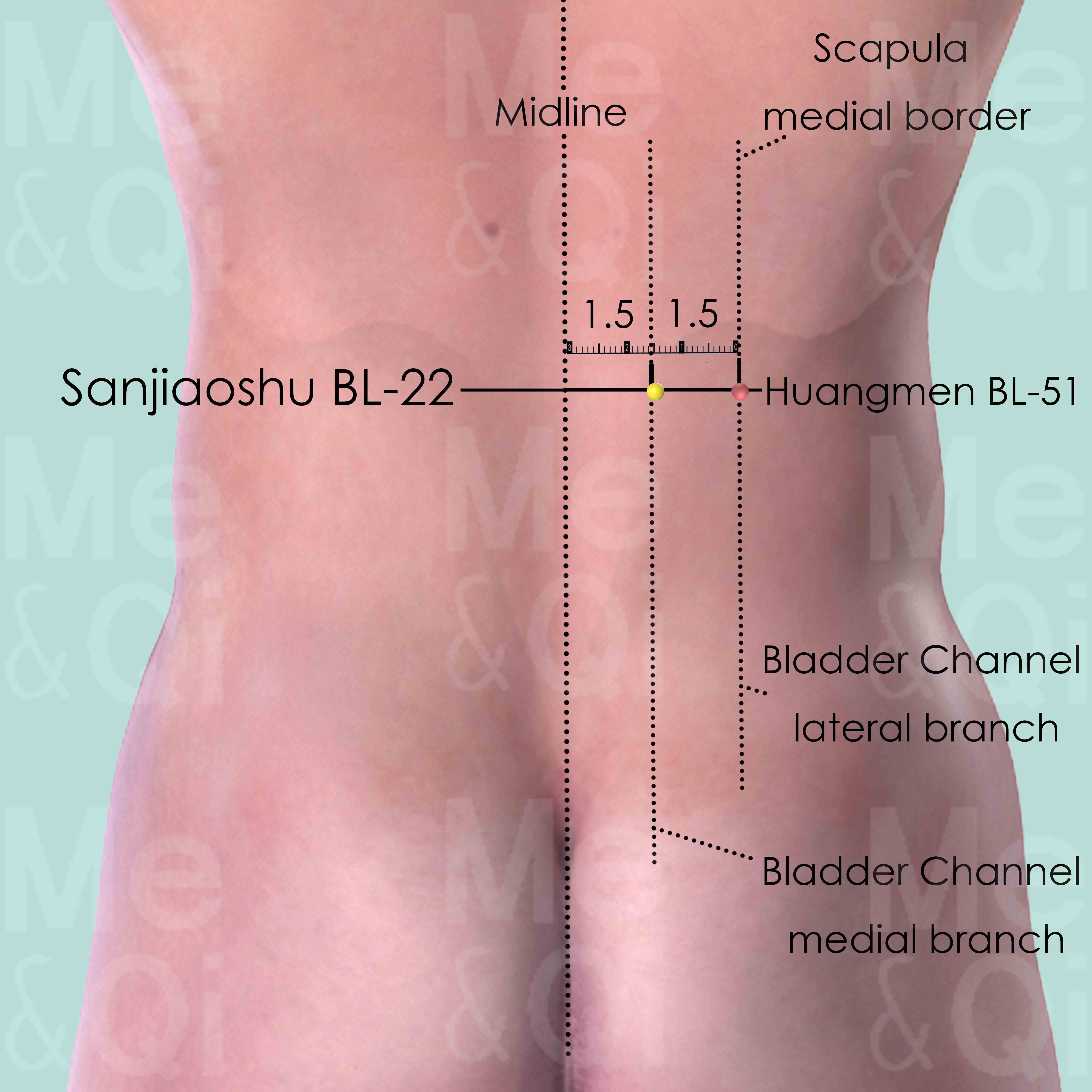
Sanjiaoshu BL-22
1.5 cun lateral to the lower border of the spinous process of the 1st lumbar vertebra.
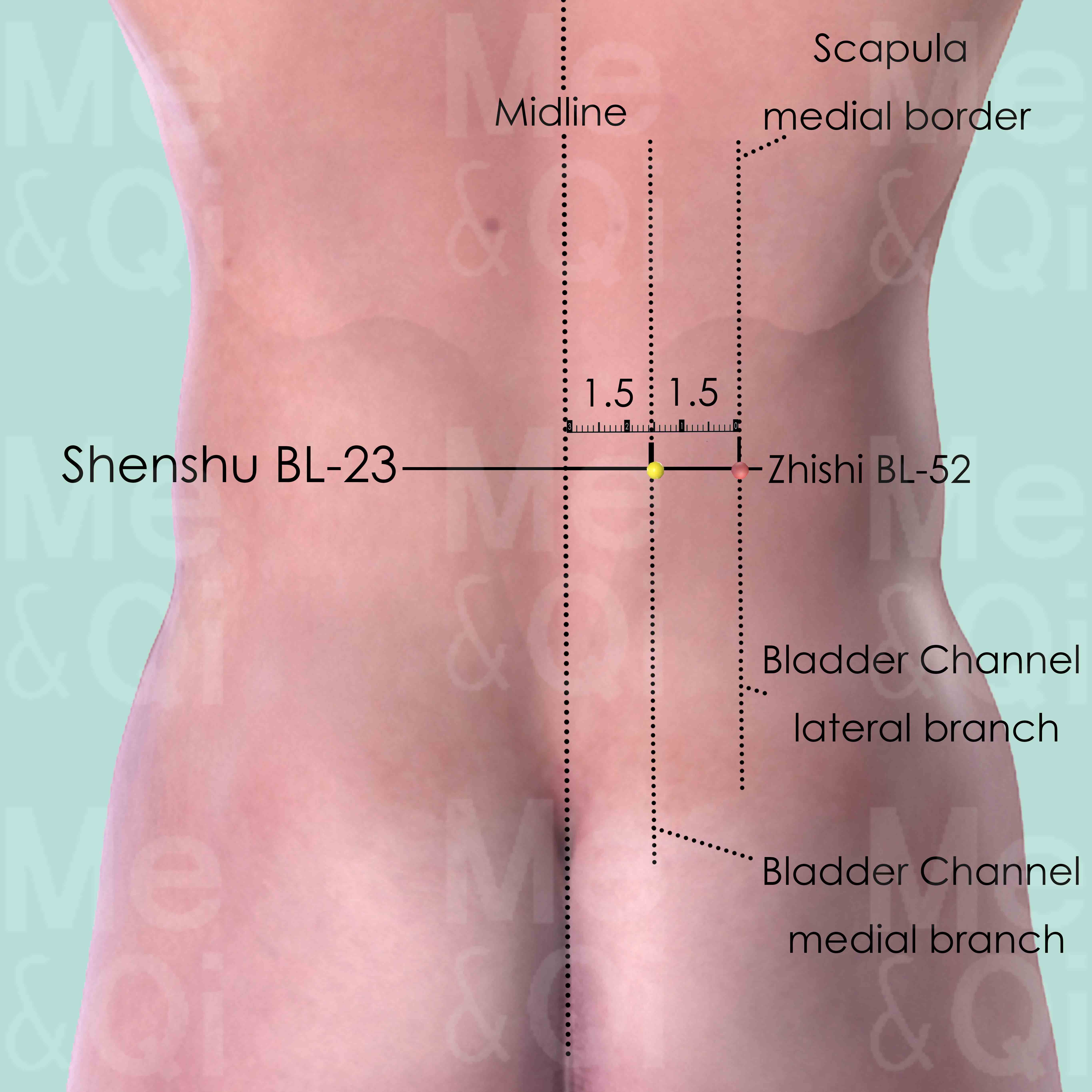
Shenshu BL-23
1.5 cun lateral to the lower border of the spinous process of the 2nd lumber vertebra (L2).
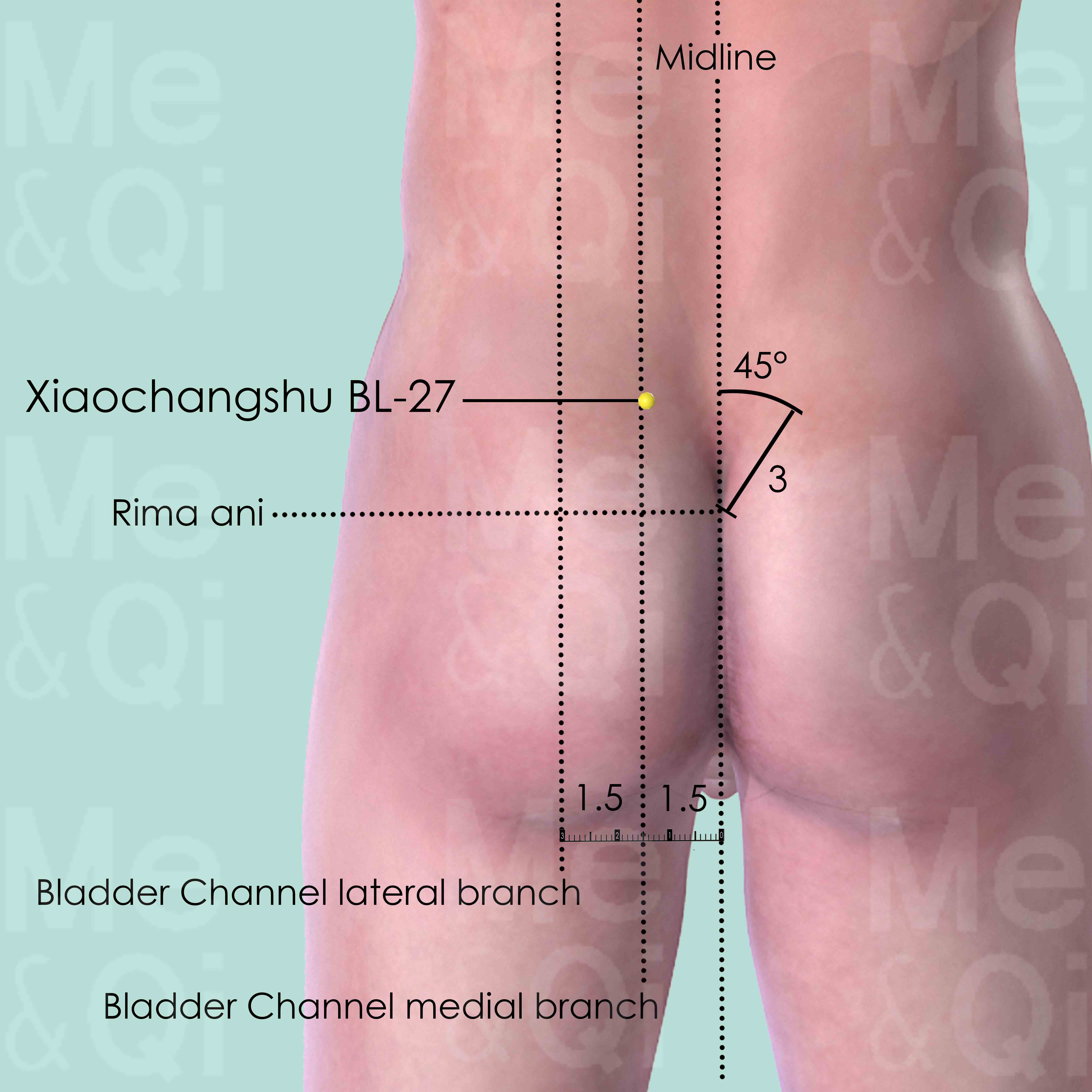
Xiaochangshu BL-27
At the level of the 1st posterior sacral foramen, 1.5 cun lateral to the posterior midline.
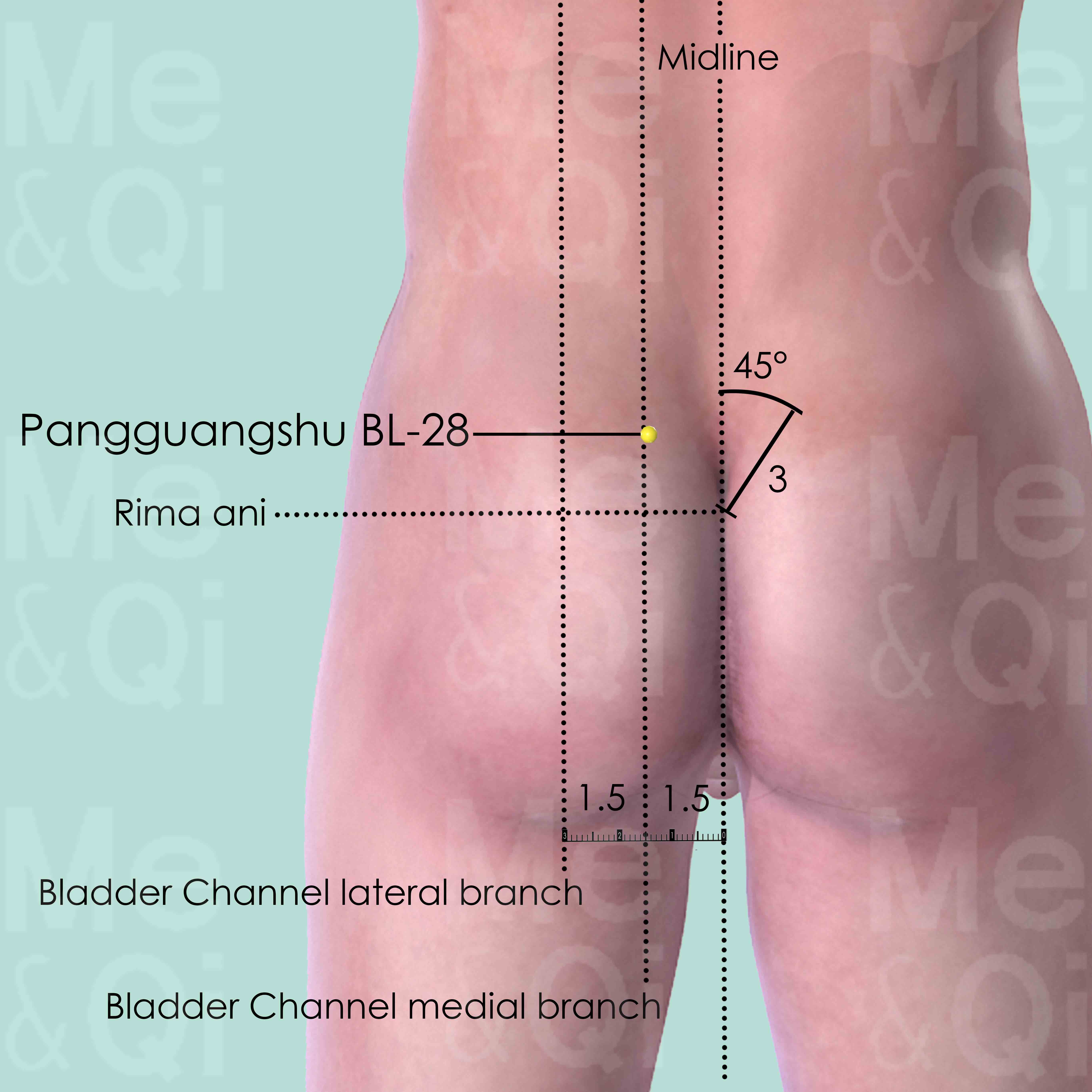
Pangguangshu BL-28
At the level of the 2nd posterior sacral foramen, 1.5 cun lateral to the posterior midline, in the depression between the medial border of the posterior superior iliac spine (PSIS) and the sacrum.
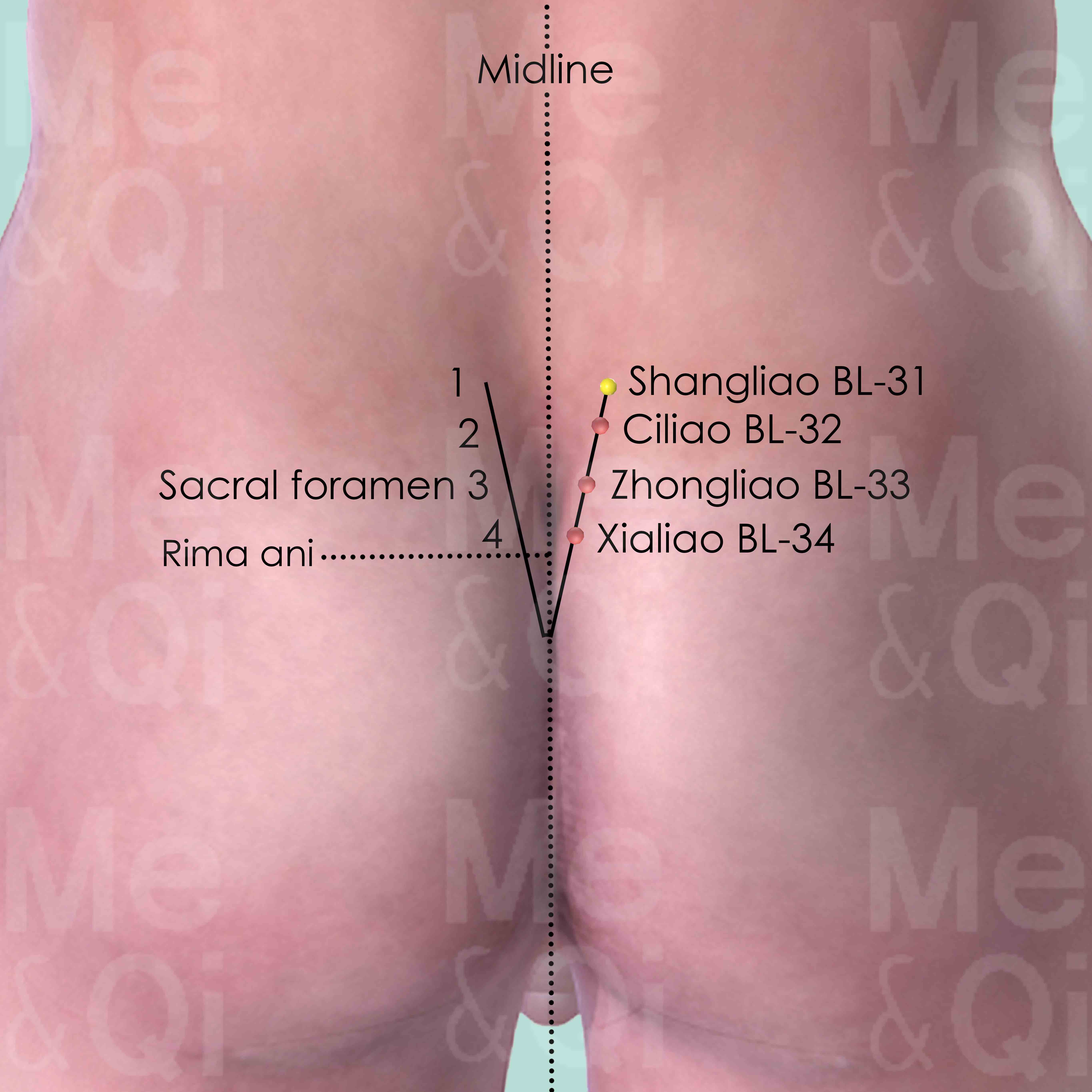
Shangliao BL-31
In the 1st posterior sacral foramen, about midway between the posterior superior iliac spine (PSIS) and the midline.
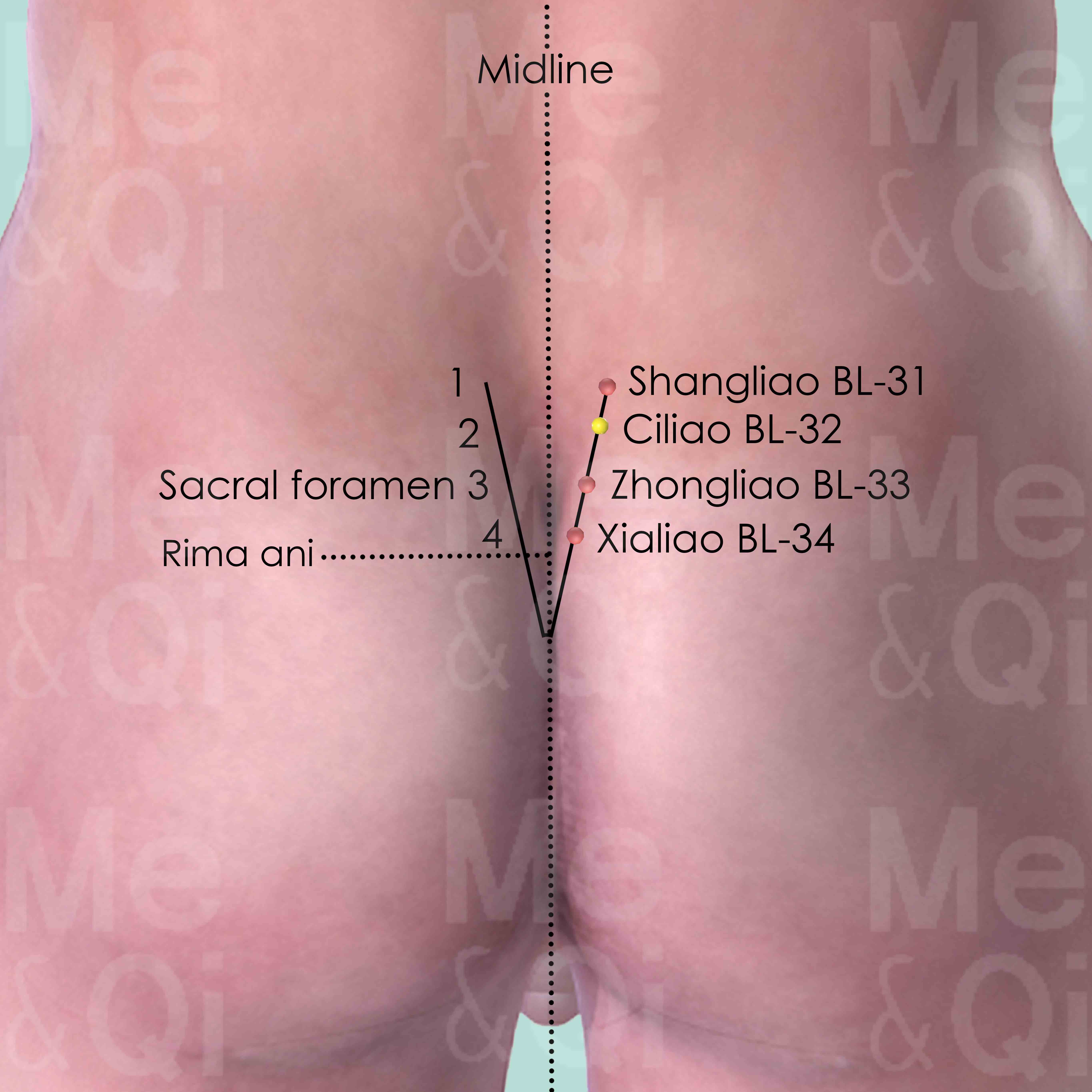
Ciliao BL-32
In the 2nd posterior sacral foramen, about midway between the posterior superior iliac spine (PSIS) and the midline.
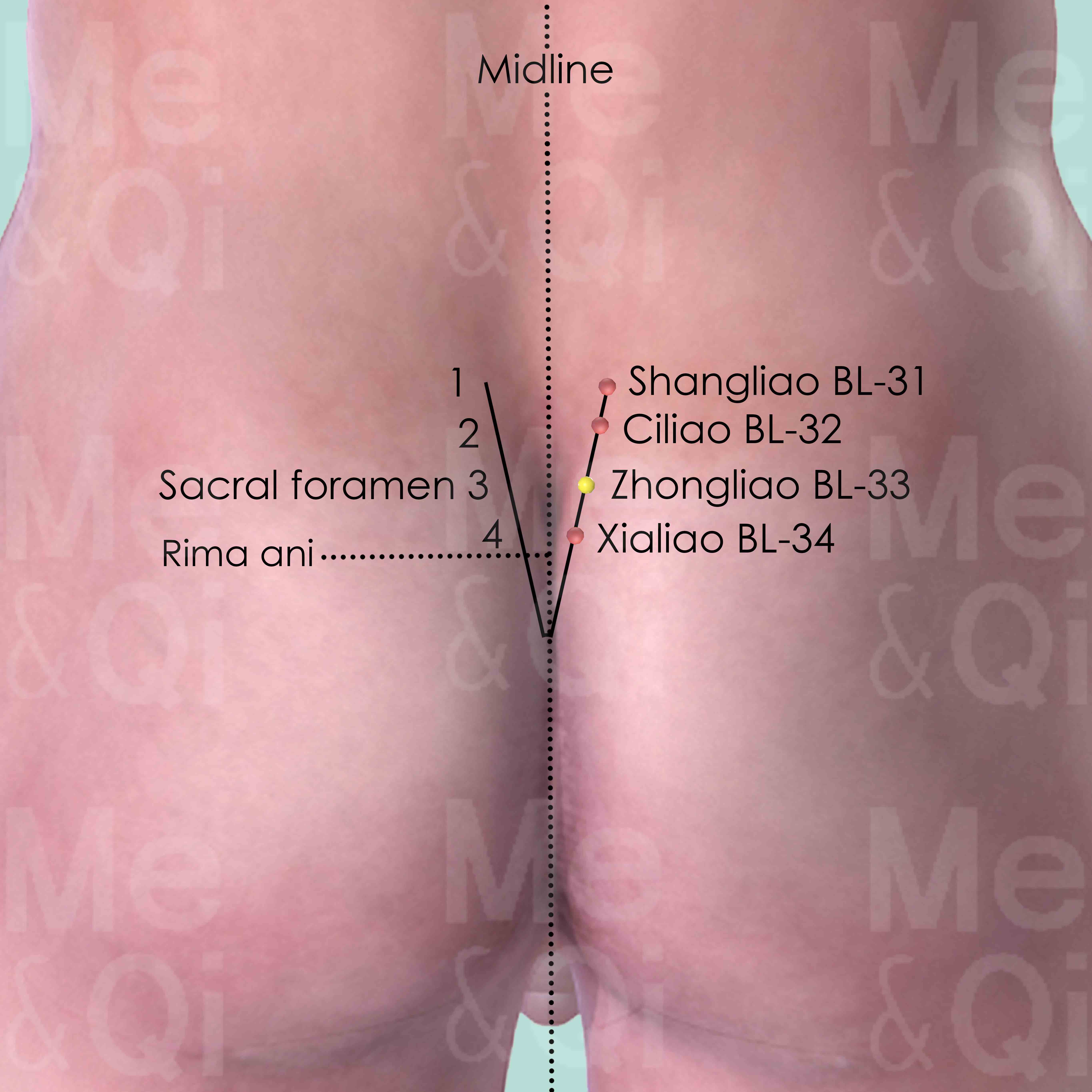
Zhongliao BL-33
In the 3rd posterior sacral foramen, between the posterior superior iliac spine and the midline.
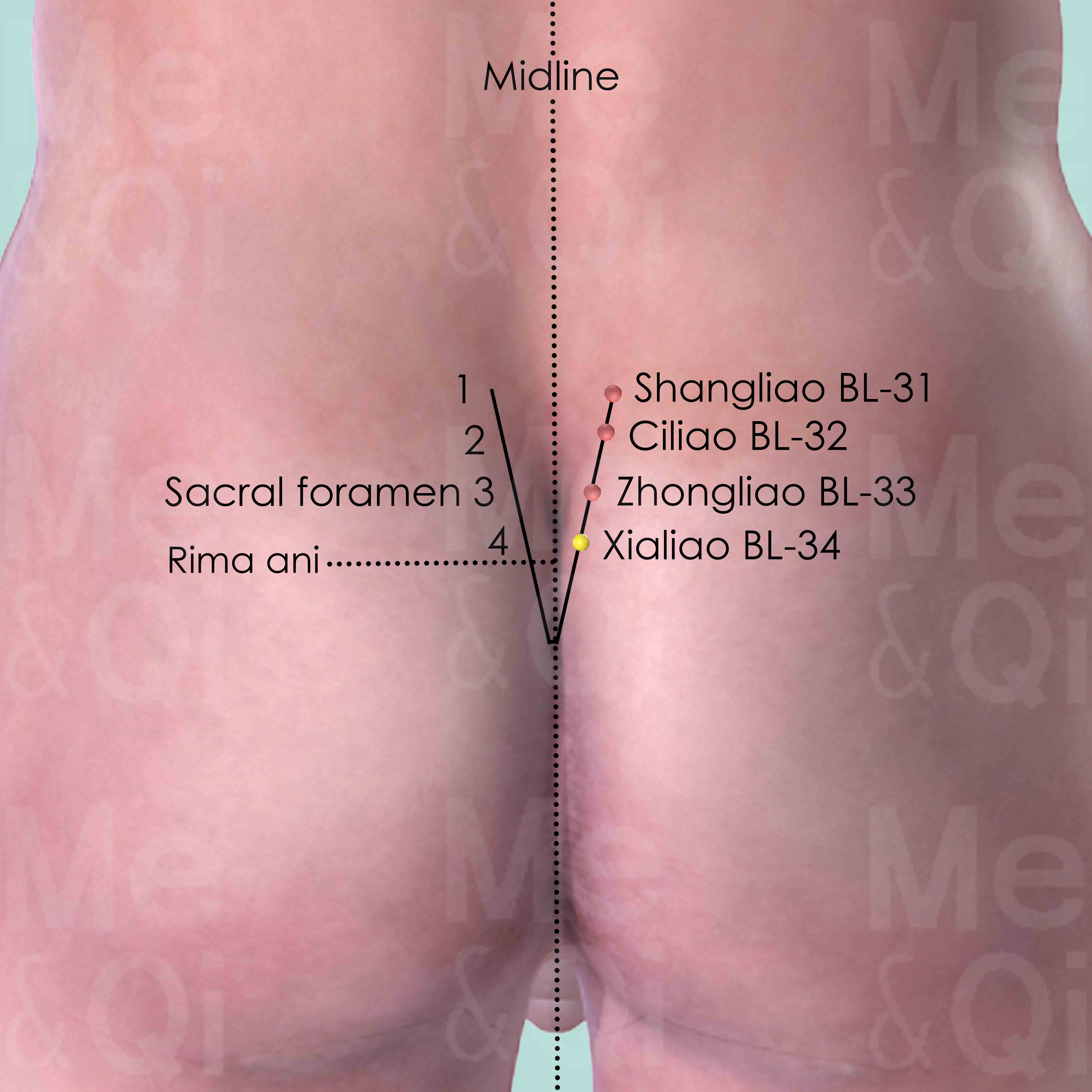
Xialiao BL-34
In the 4th posterior sacral foramen, between the posterior superior iliac spine and the midline.
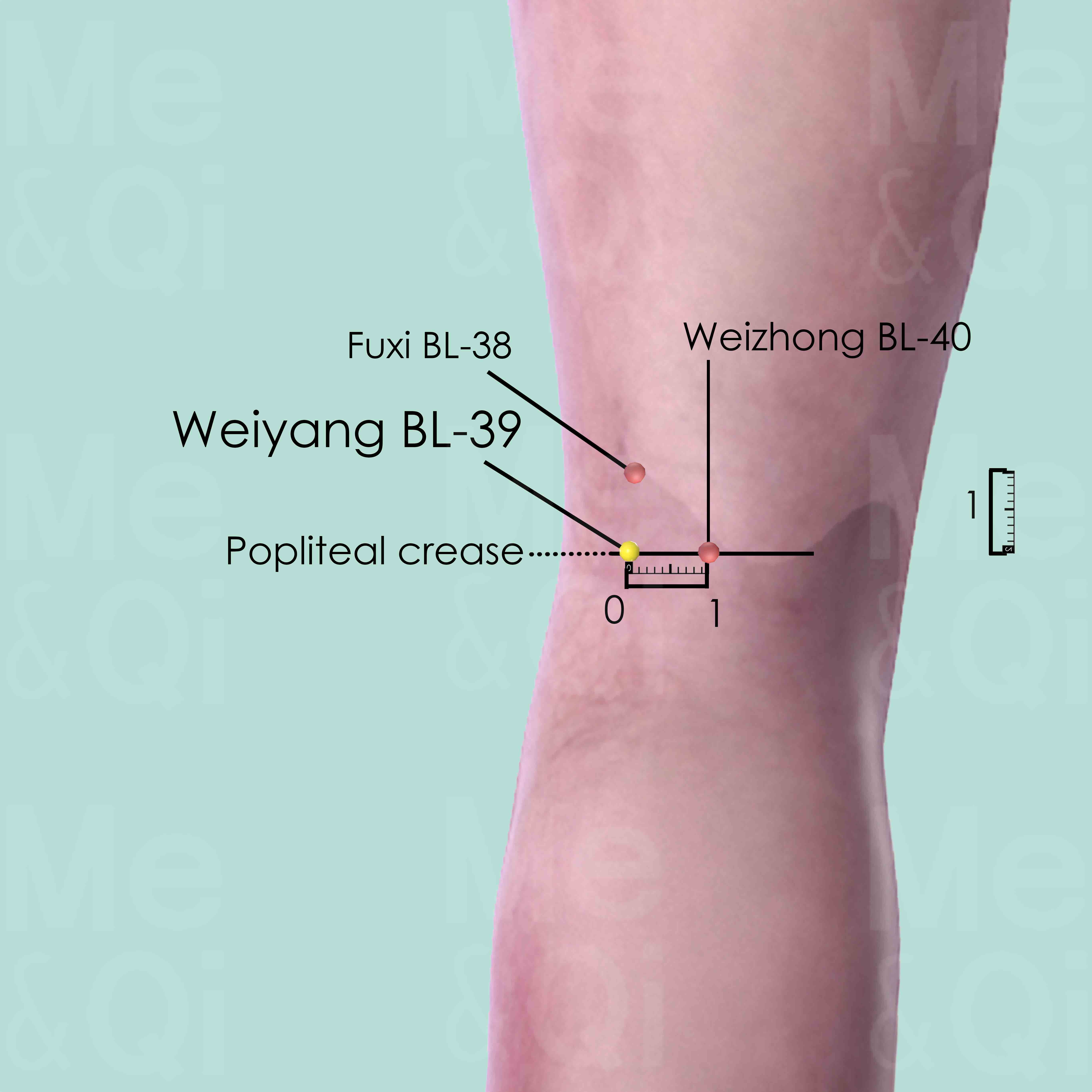
Weiyang BL-39
At the lateral end of the popliteal crease, on the medial border of the tendon of biceps femoris muscle, 1 cun lateral to Weizhong BL-40 which is the midpoint of the popliteal crease. It is also 1 cun below Fuxi BL-38.
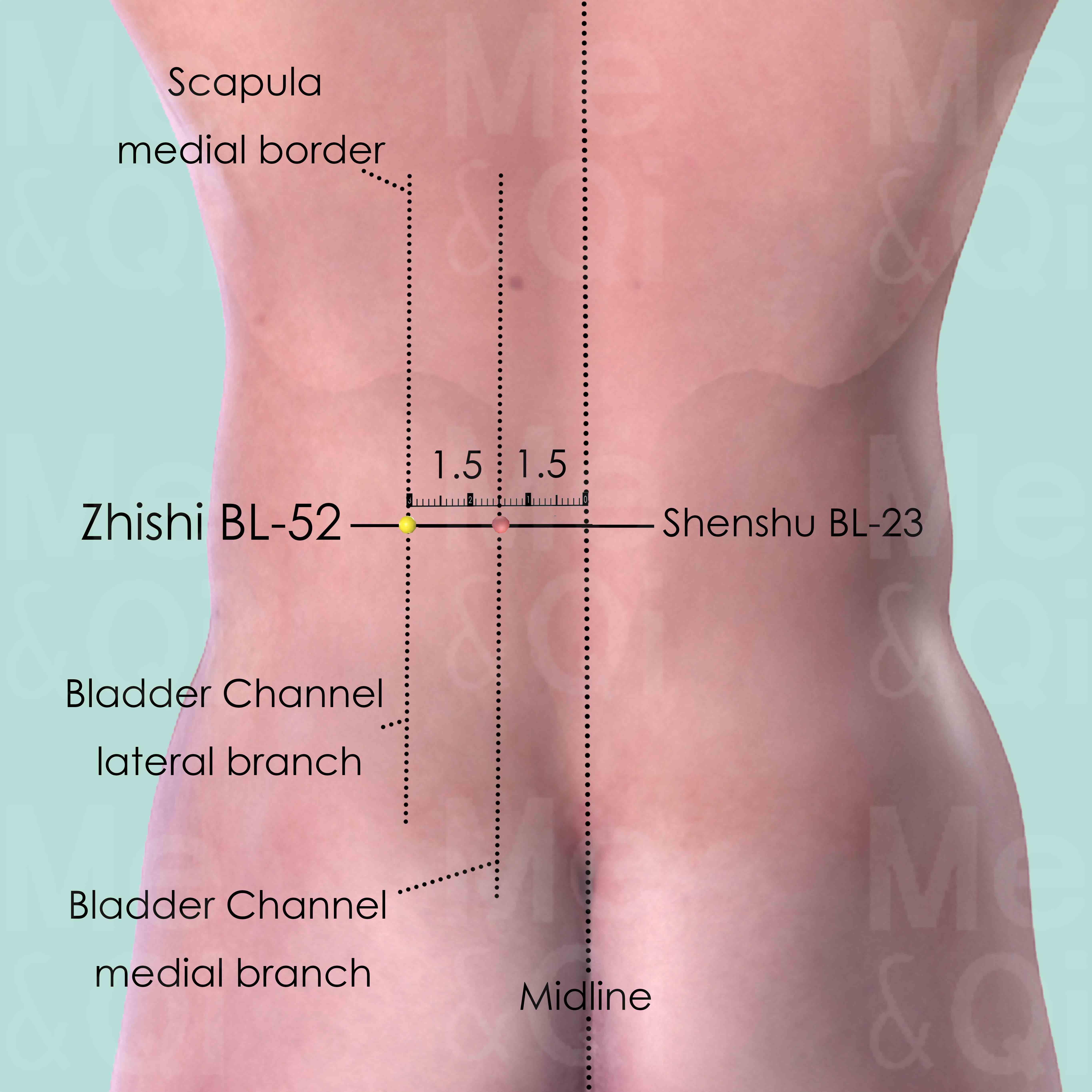
Zhishi BL-52
3 cun lateral to the lower border of the spinous process of the 2nd lumber vertebra (L2).
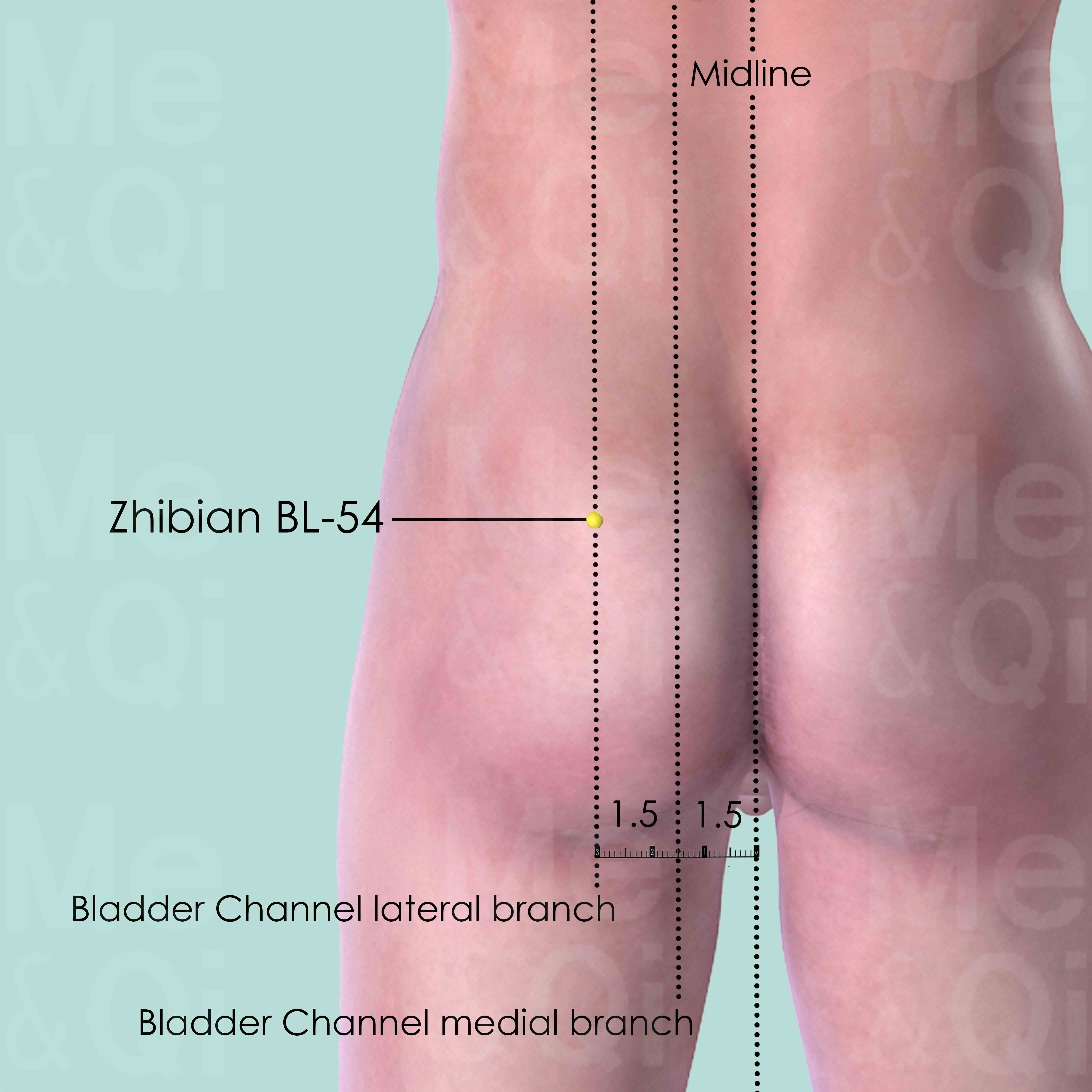
Zhibian BL-54
At the level of the 4th posterior sacral foramen, 3 cun lateral to the posterior midline.
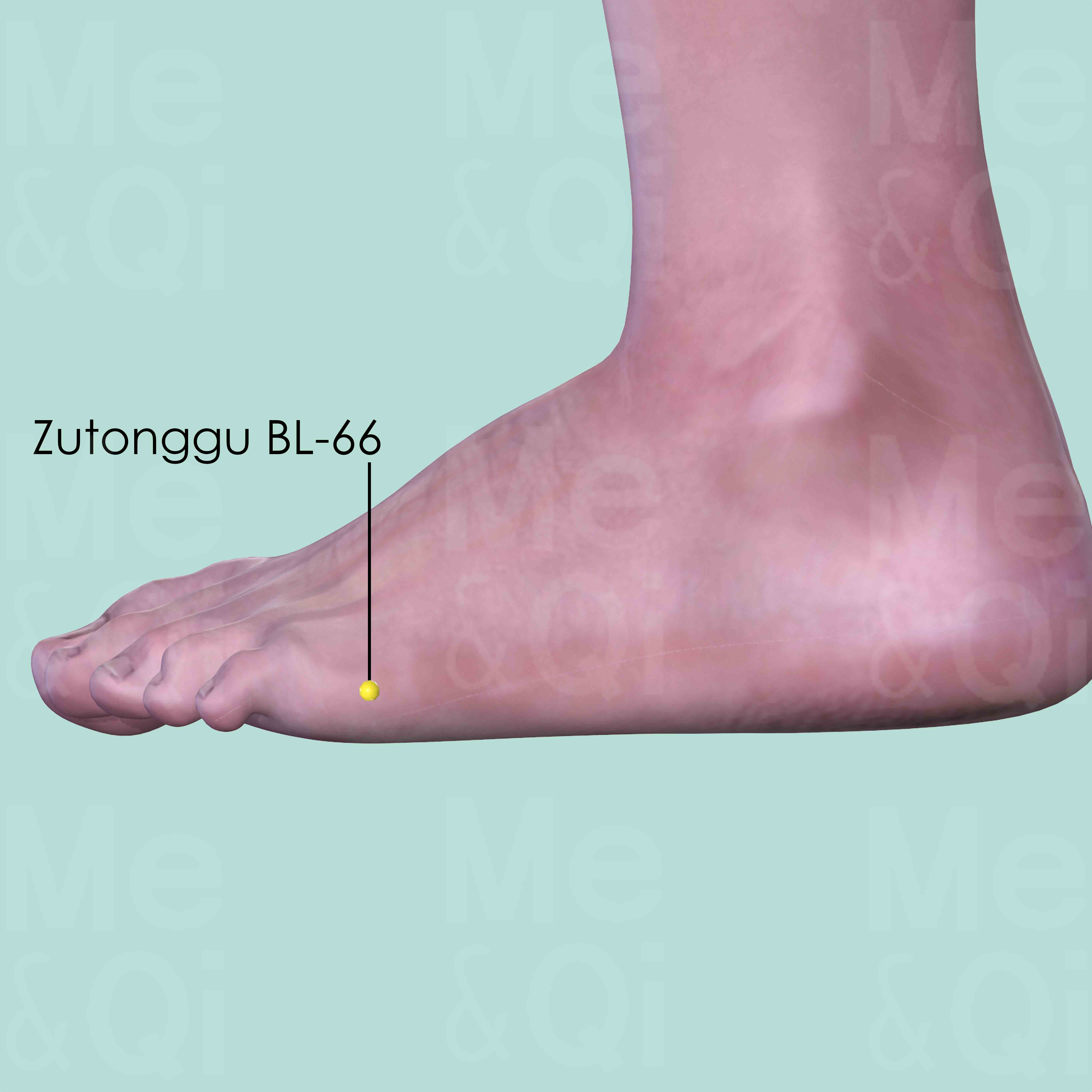
Zutonggu BL-66
In the depression distal and inferior to the 5th metatarsophalangeal joint, at the lateral border of the foot.
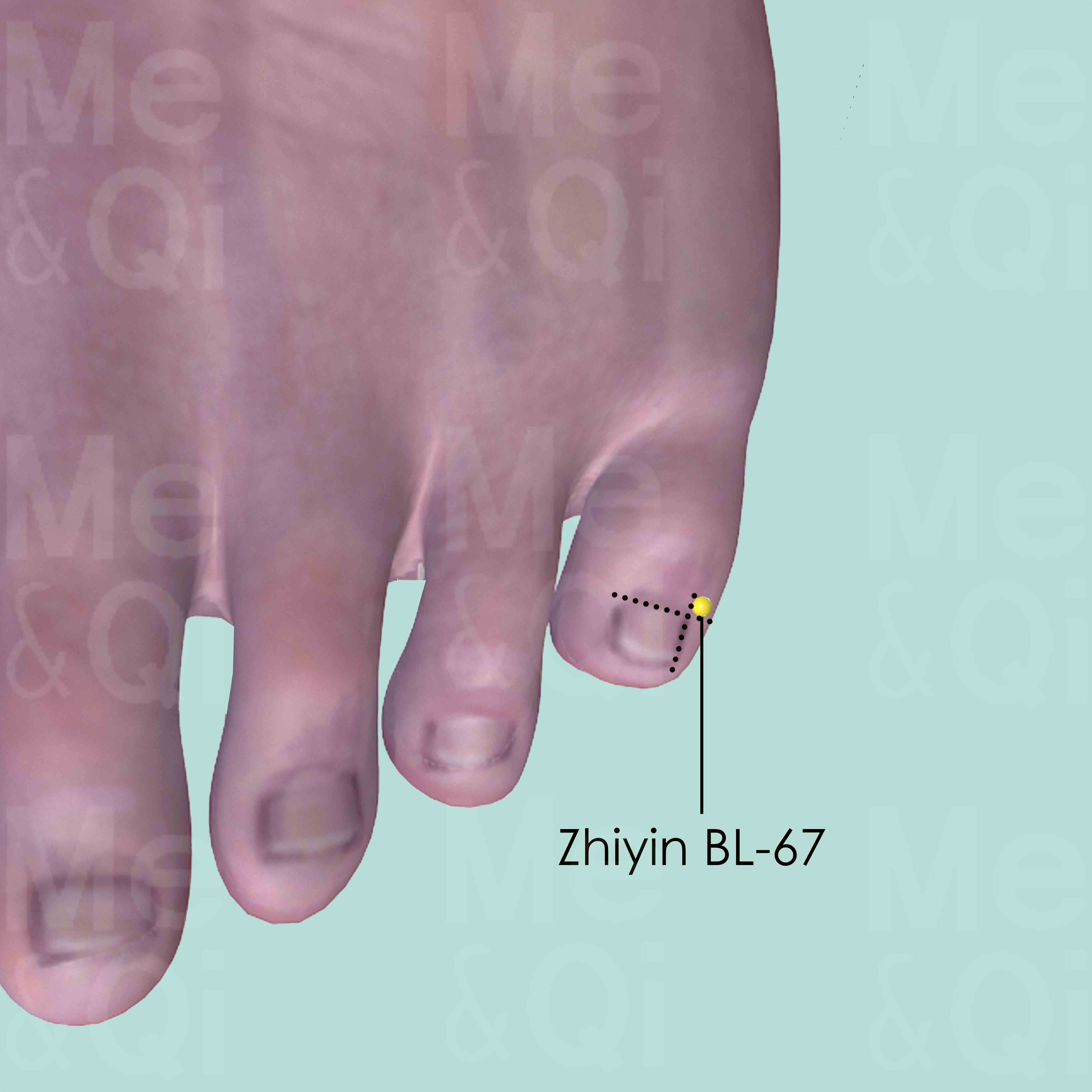
Zhiyin BL-67
On the lateral side of the little toe, about 0.1 cun posterior to the corner of the nail.
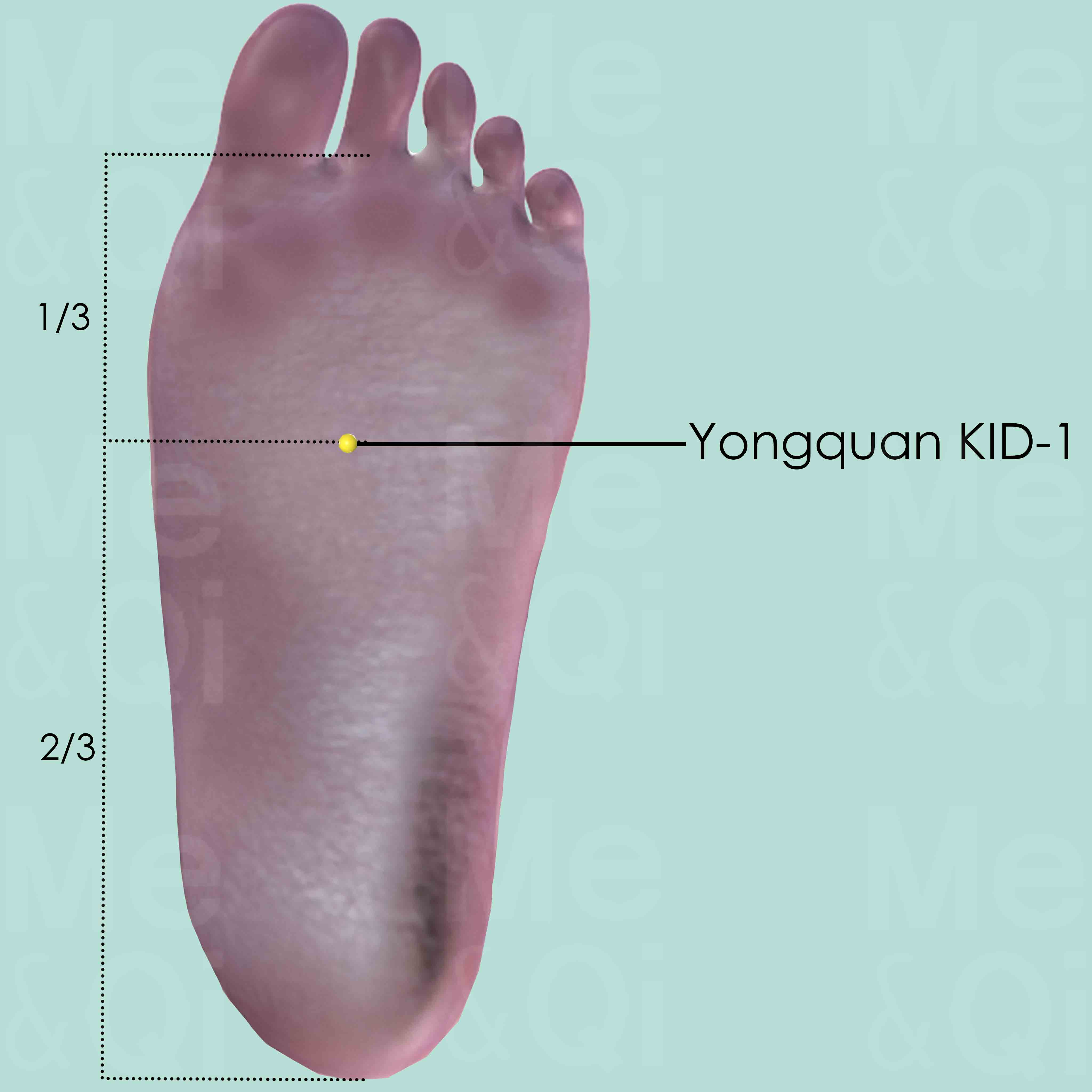
Yongquan KID-1
In the depression between the 2nd and 3rd metatarsal bones on the sole when the foot is in plantar flexion, approximately at the junction of the anterior and middle third of the sole.
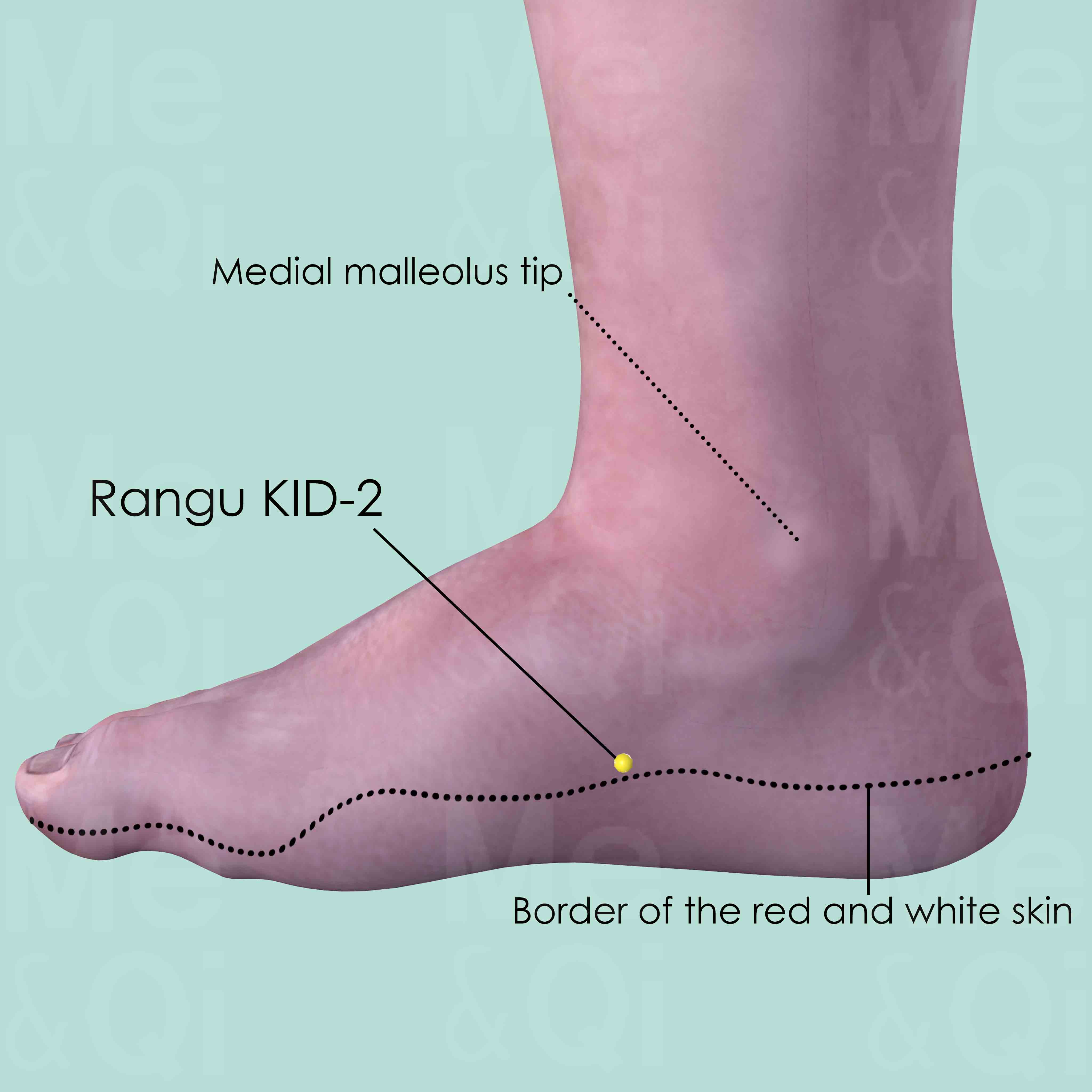
Rangu KID-2
Anterior and inferior to the medial malleolus tip, in the depression on the lower border of the navicular bone, at the border of the 'red and white' skin.
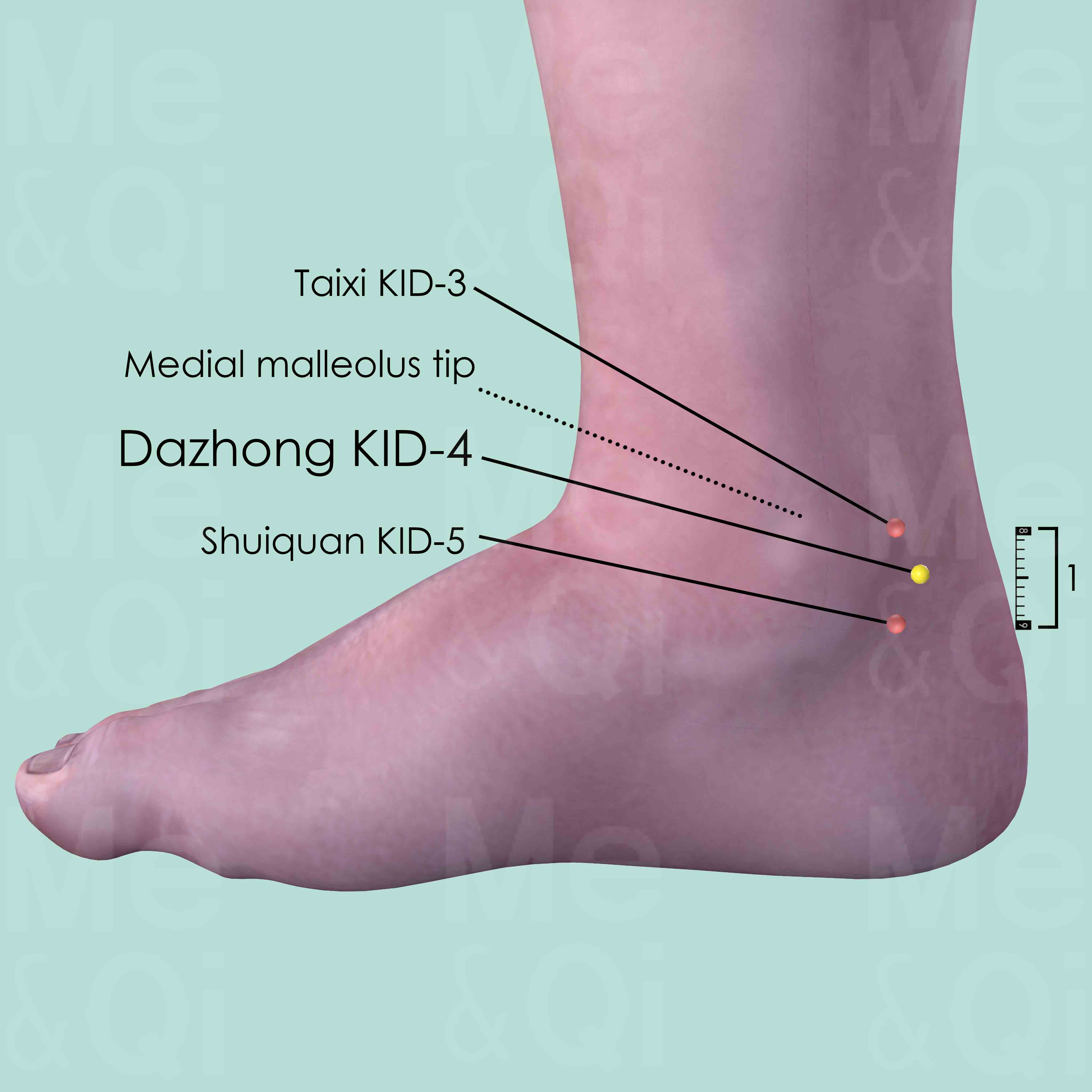
Dazhong KID-4
Posterior and inferior to the medial malleolus, in the depression medial to the Achilles tendon, superior to its insertion at the calcaneus.
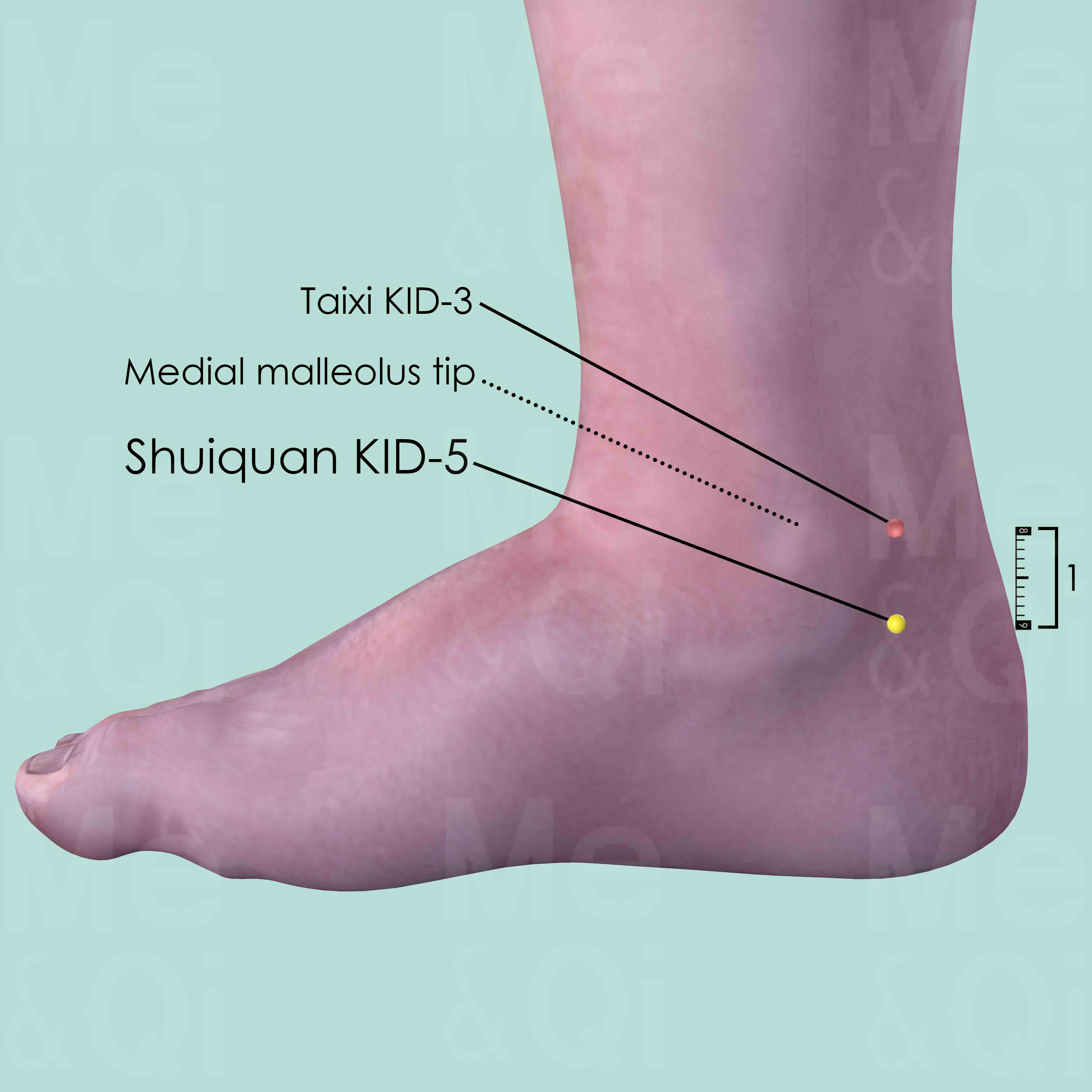
Shuiquan KID-5
1 cun directly below Taixi KID-3, in the depression over the joint space between the talus and calcaneus.
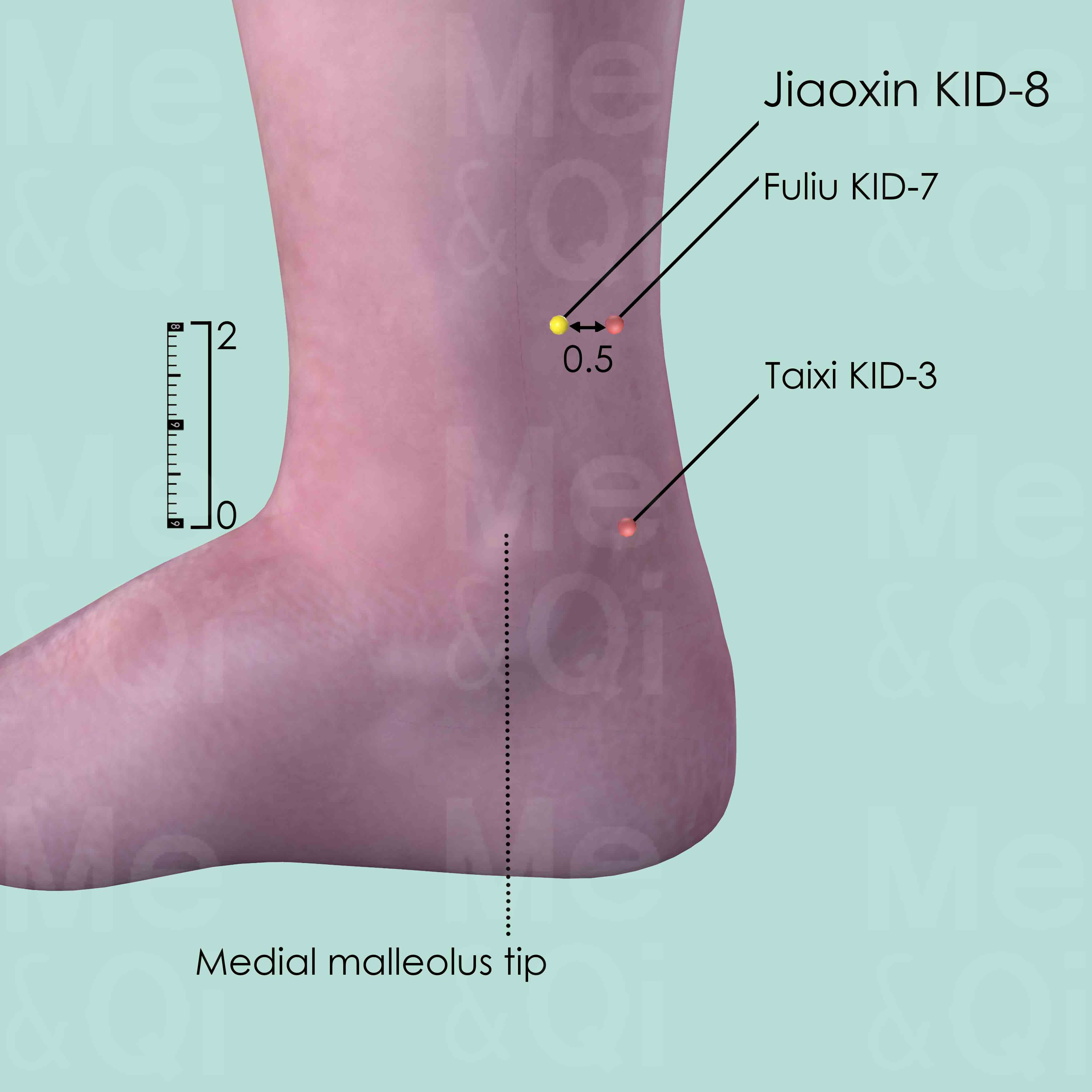
Jiaoxin KID-8
2 cun above Taixi KID-3, 0.5 cun anterior to Fuliu KID-7, posterior to the medial border of tibia.
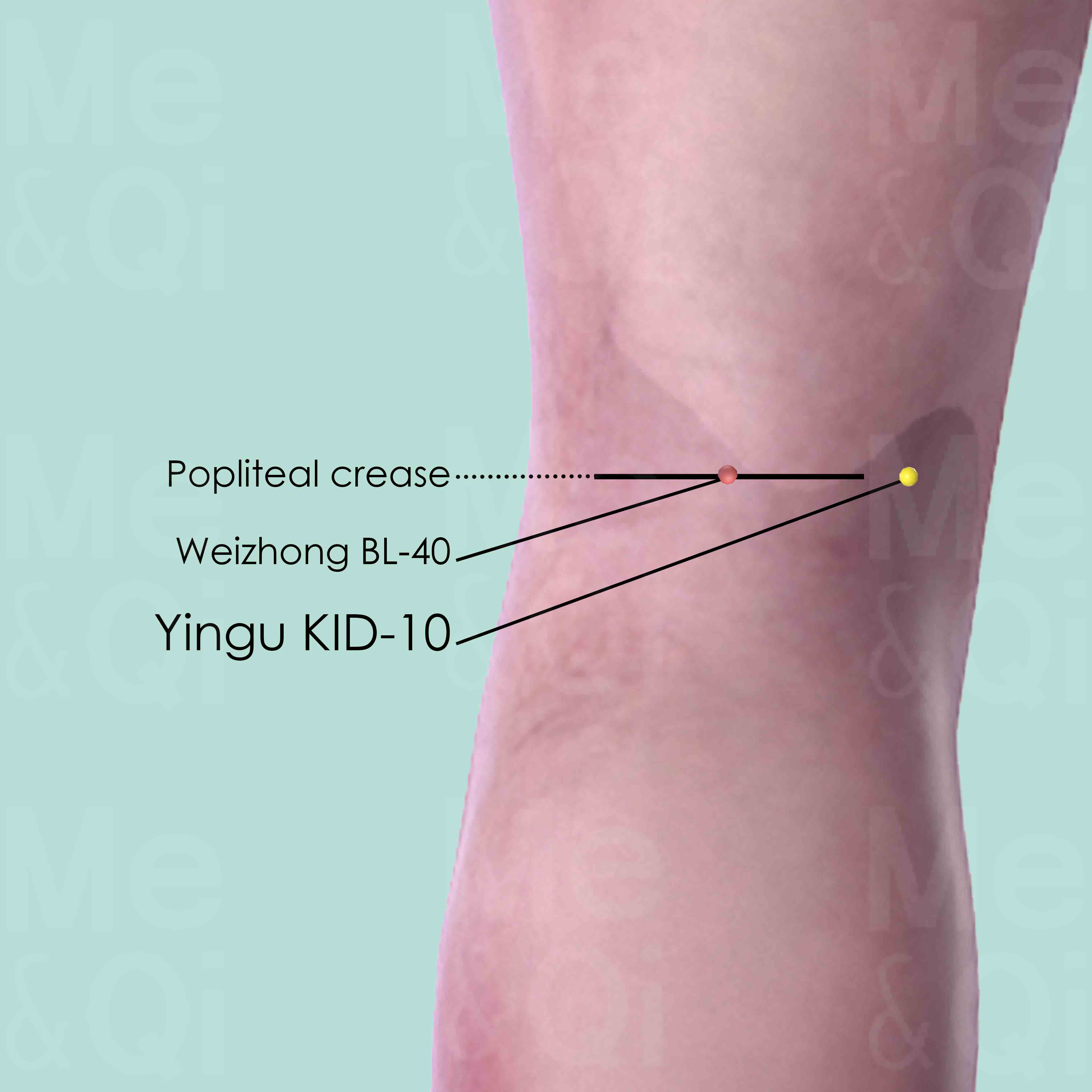
Yingu KID-10
On the medial side of the popliteal fossa, level with Weizhong BL-40, between the tendons of semitendinosus and semimenbranosus muscle when the knee is flexed.
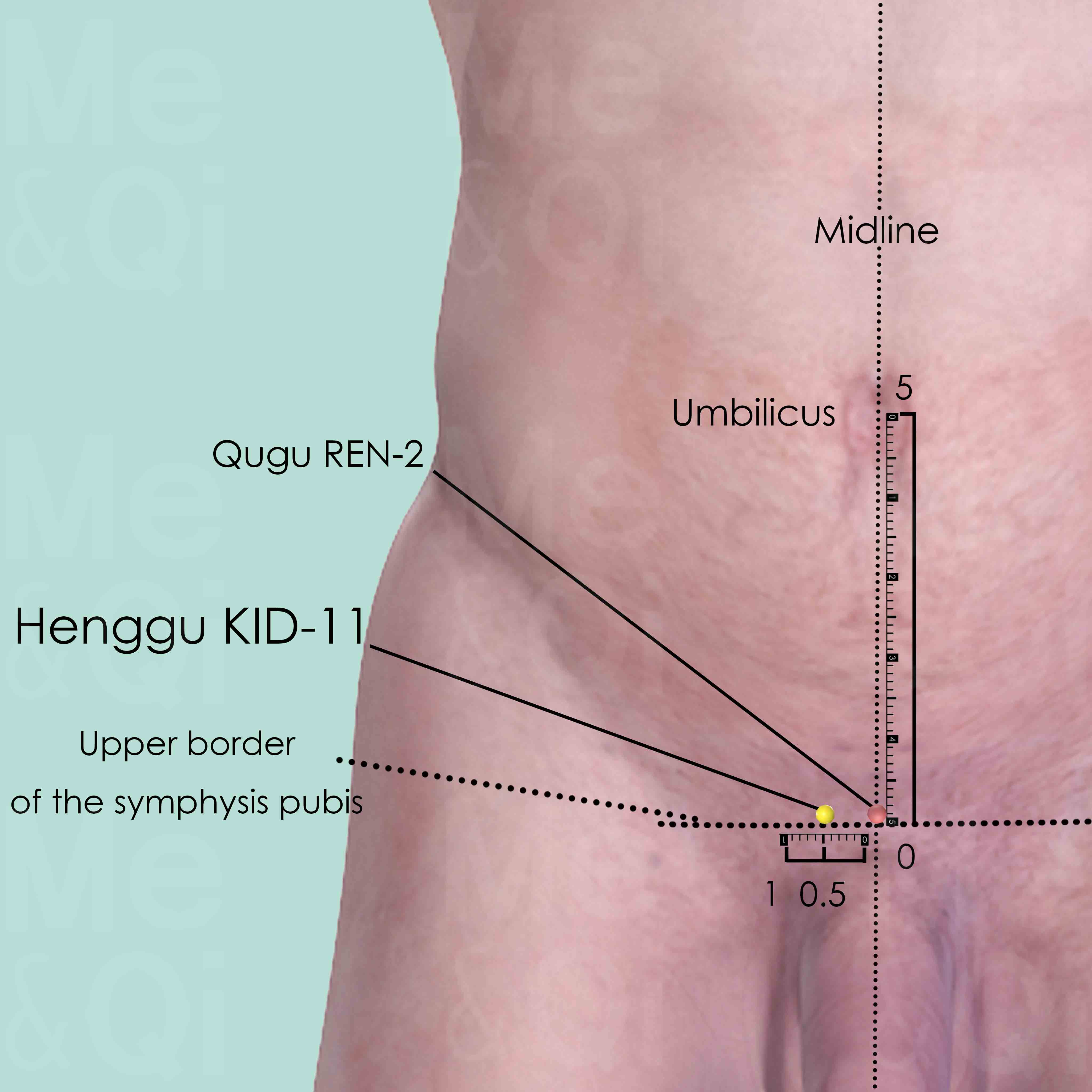
Henggu KID-11
5 cun below the umbilicus, on the upper border of symphysis pubis, 0.5 cun lateral to the anterior midline. It is at the same level as Qugu REN-2 which is at the anterior midline.
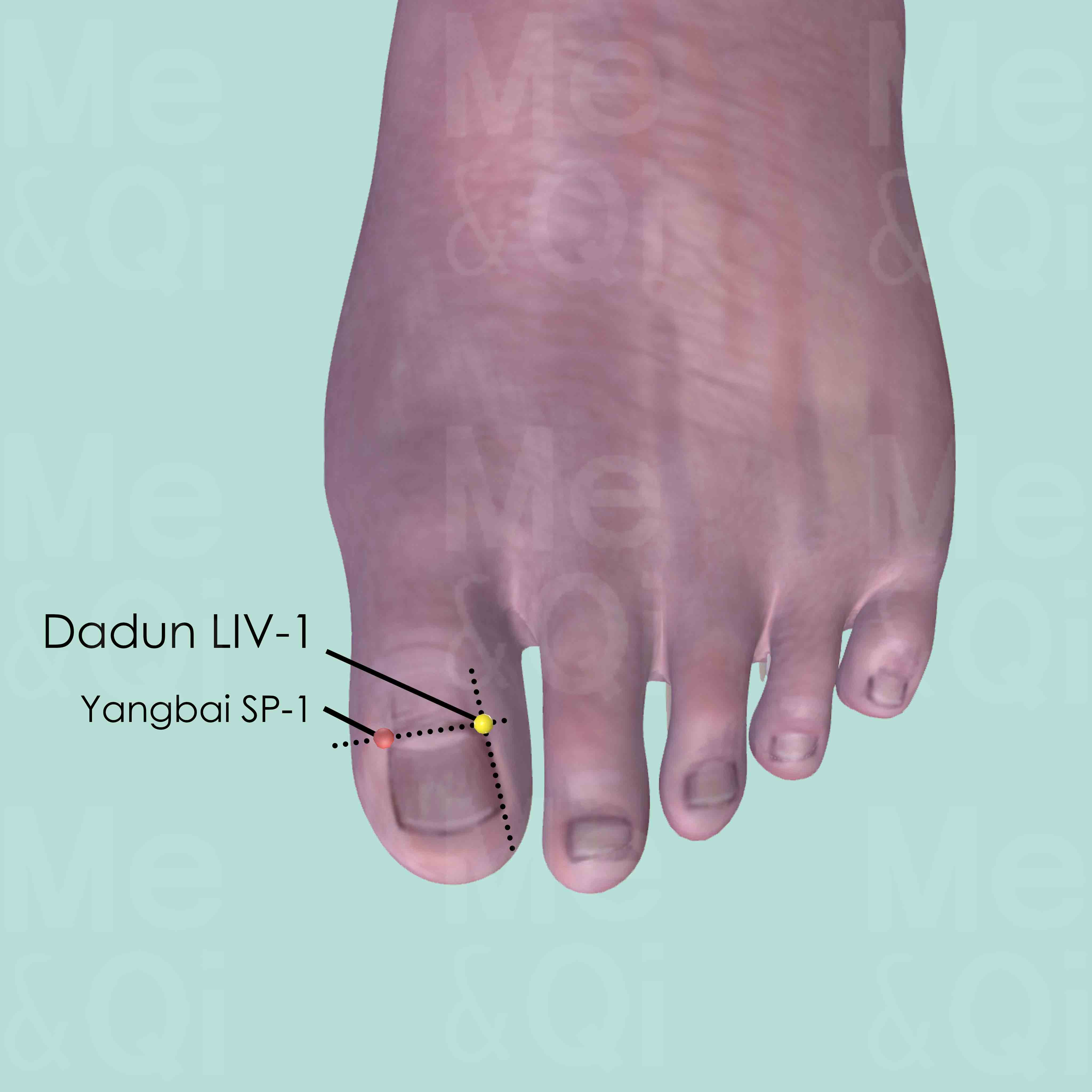
Dadun LIV-1
On the lateral side of the dorsum of the great toe terminal phalanx, between the lateral corner of the nail and interphalangeal joint.
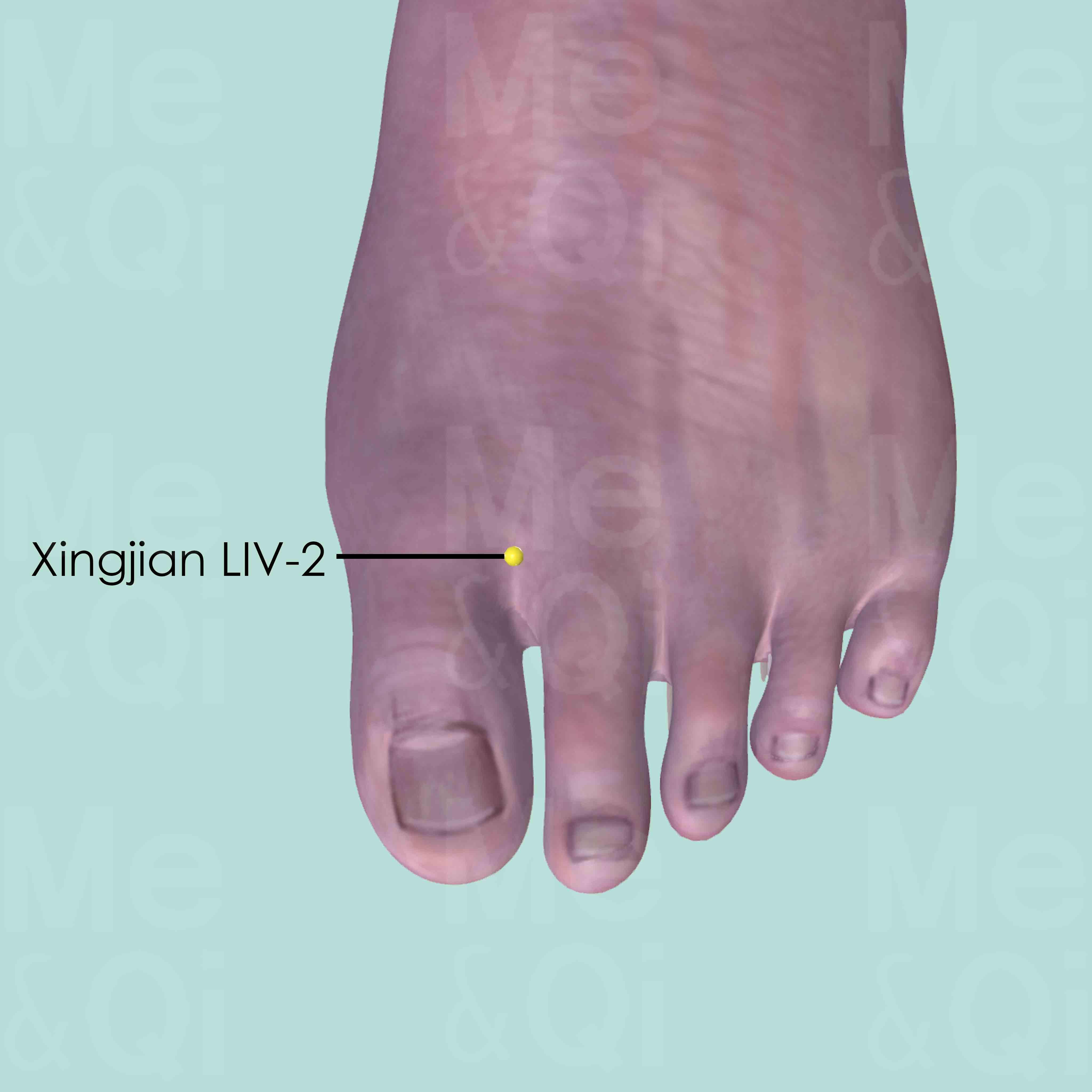
Xingjian LIV-2
Between the first and second toe, on the dorsum of the foot, 0.5 cun proximal to the interdigital fold.
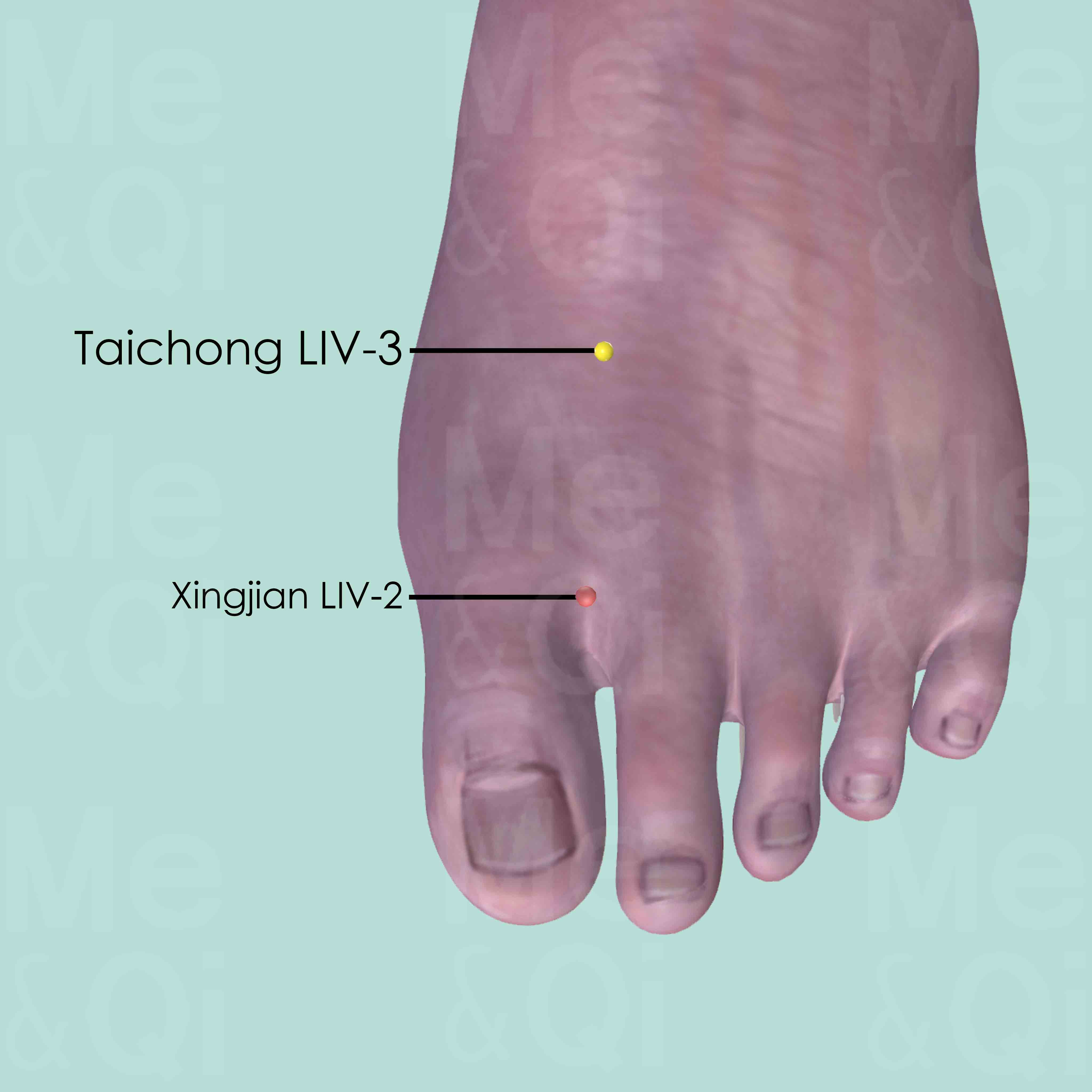
Taichong LIV-3
On the dorsum of the foot, between the 1st and 2nd metatarsal bones, in the depression proximal to the metatarsophalangeal joints and the proximal angle between the two bones.
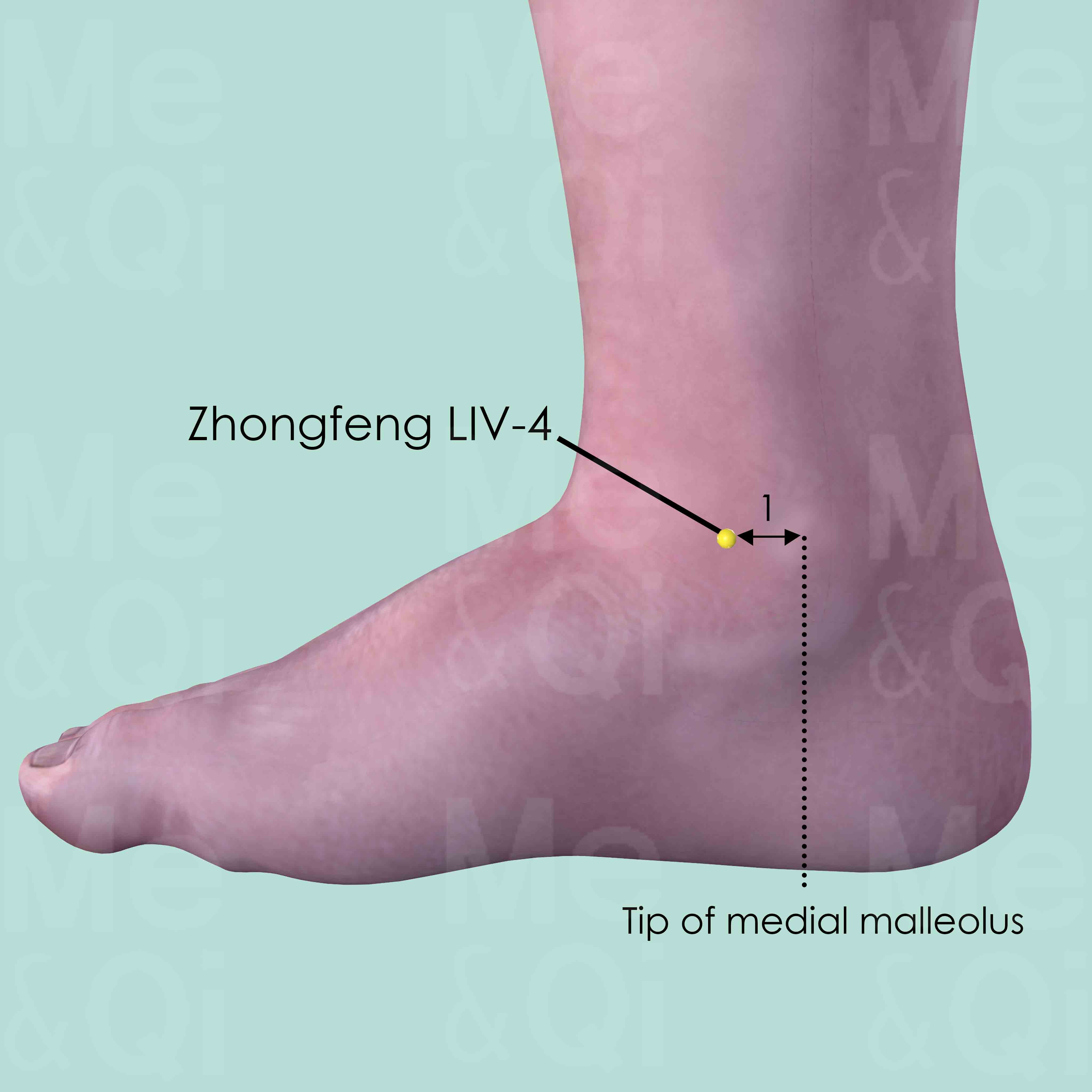
Zhongfeng LIV-4
1 cun anterior to the tip of medial malleolus, in the depression on the medial side of the tendon of the tibialis anterior.
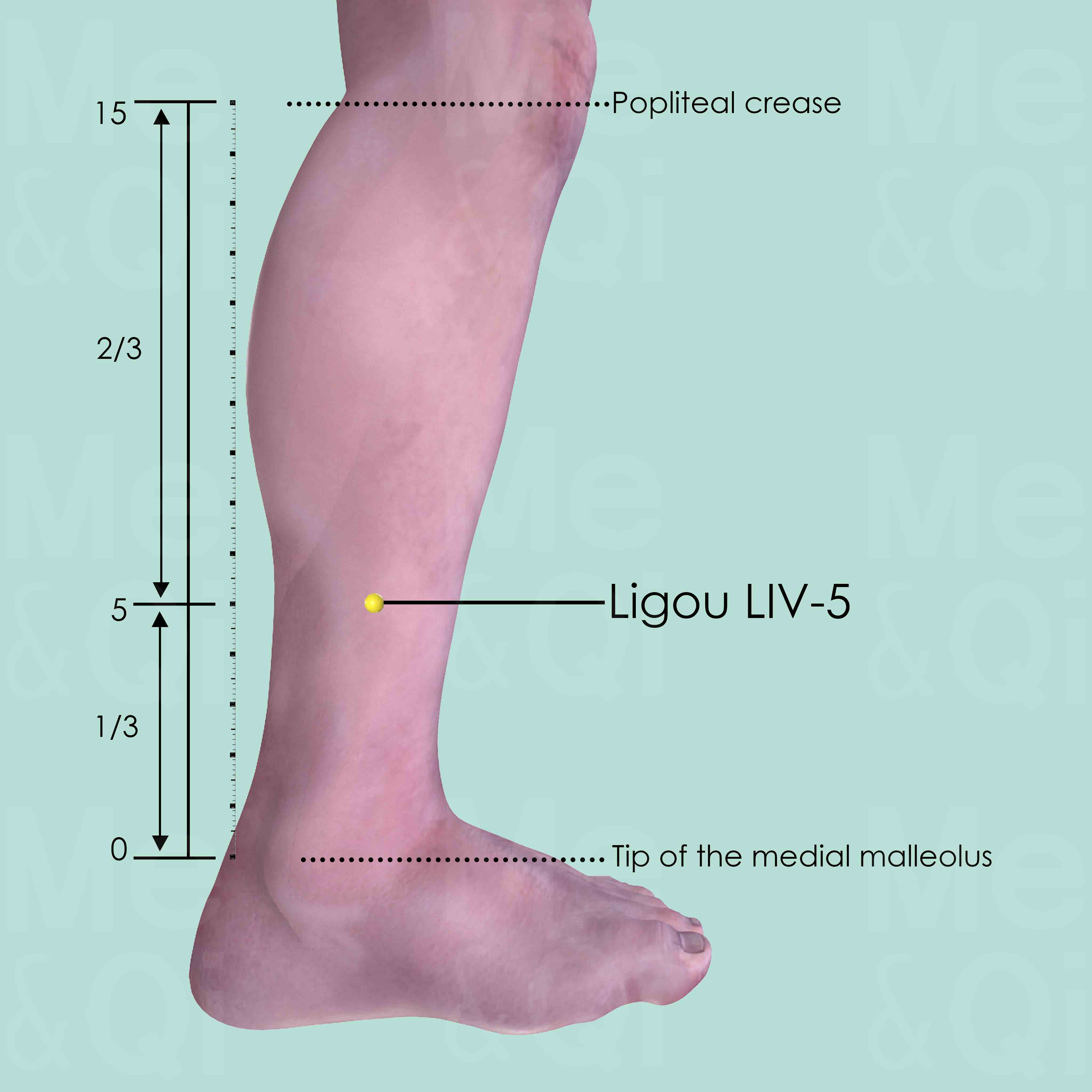
Ligou LIV-5
5 cun above the tip of the medial malleolus, on the medial aspect and posterior to the medial crest of the tibia.
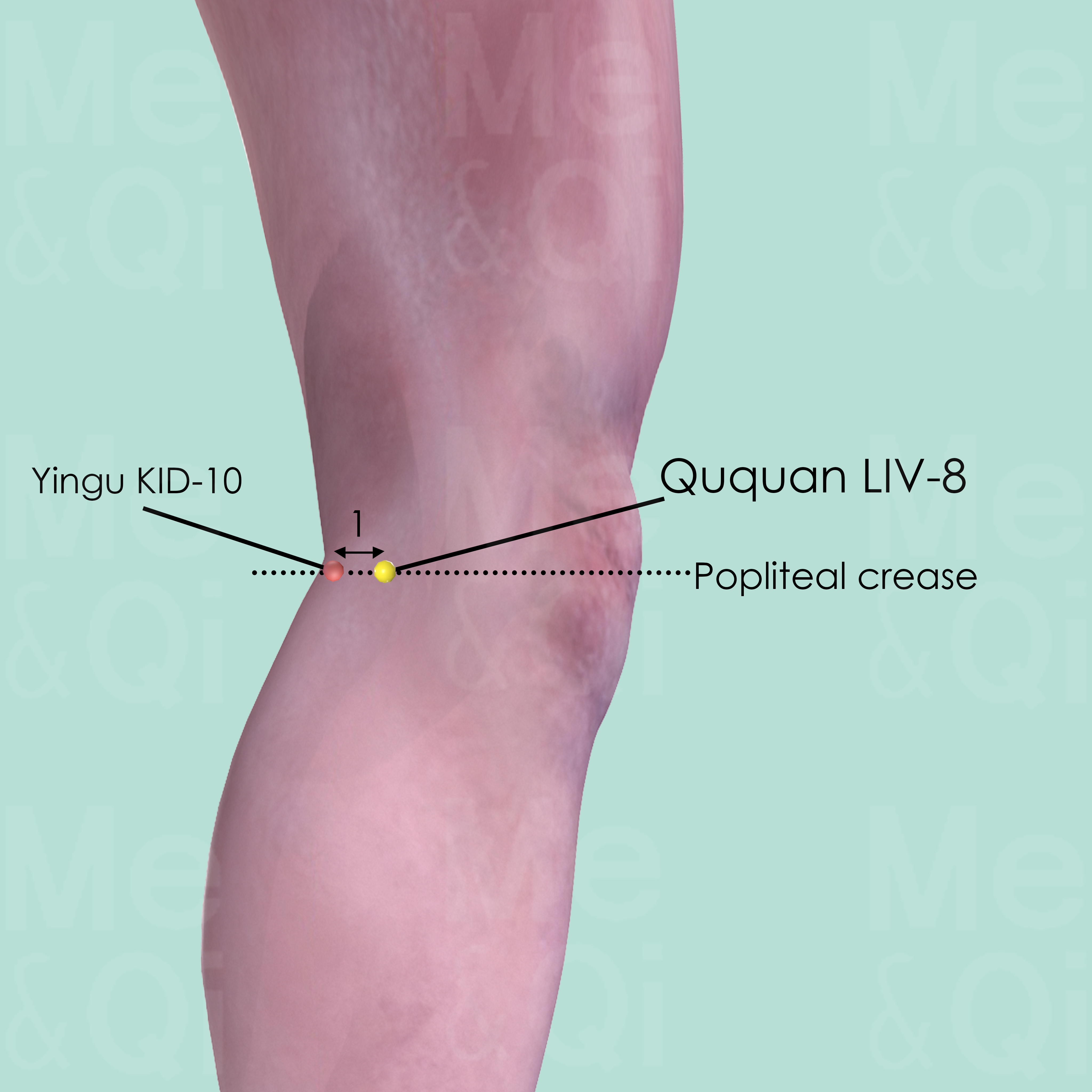
Ququan LIV-8
On the medial aspect of the knee join. Flex the knee and locate the point above the medial end of the popliteal crease, posterior to the medial condyle of the tibia, on the anterior border of the insertion of semimembranosus and semitendinosus muscle, about 1 cun anterior to Yingu KID-10.
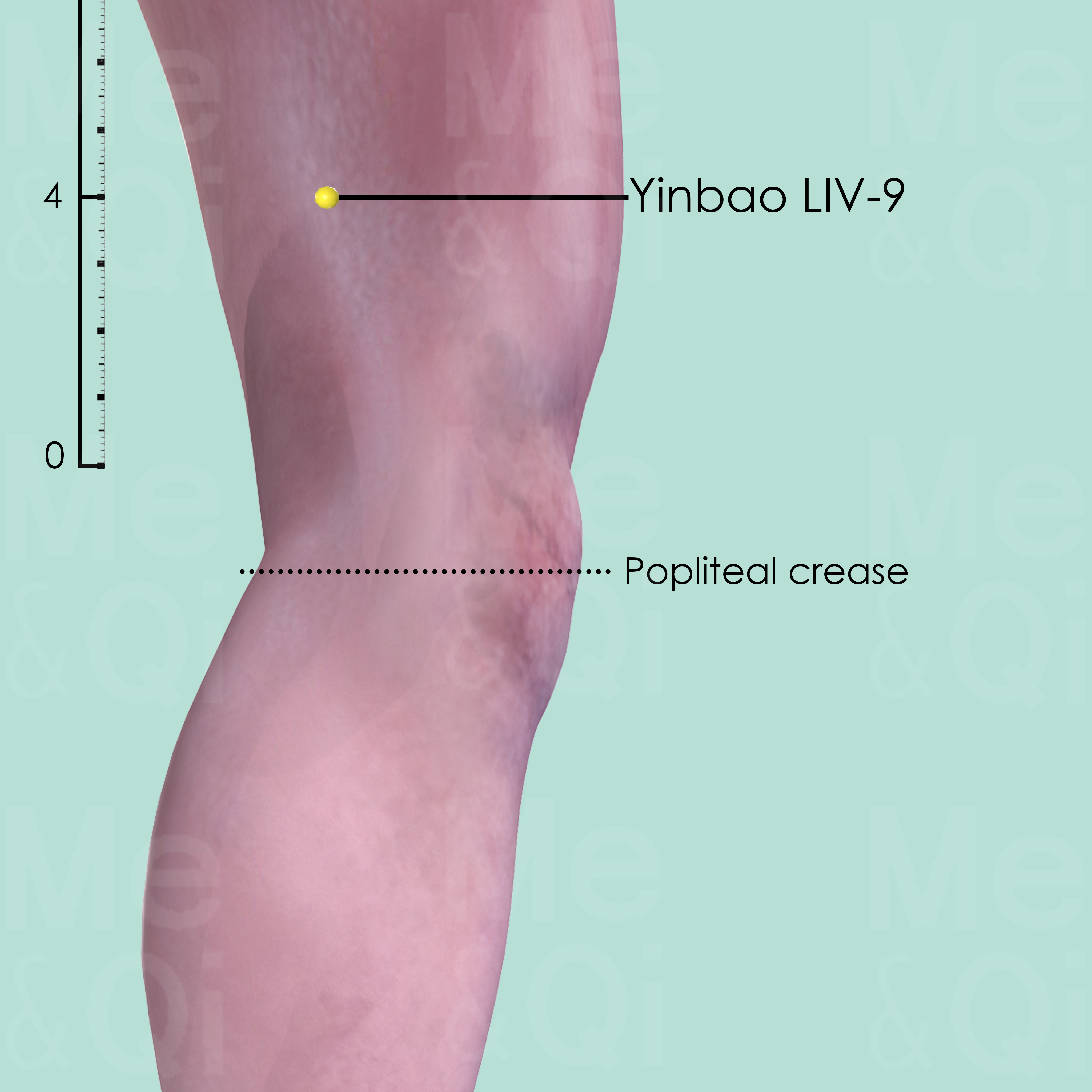
Yinbao LIV-9
4 cun above the medial epicondyle of the femur, between vastus medialis and sartorius muscle.
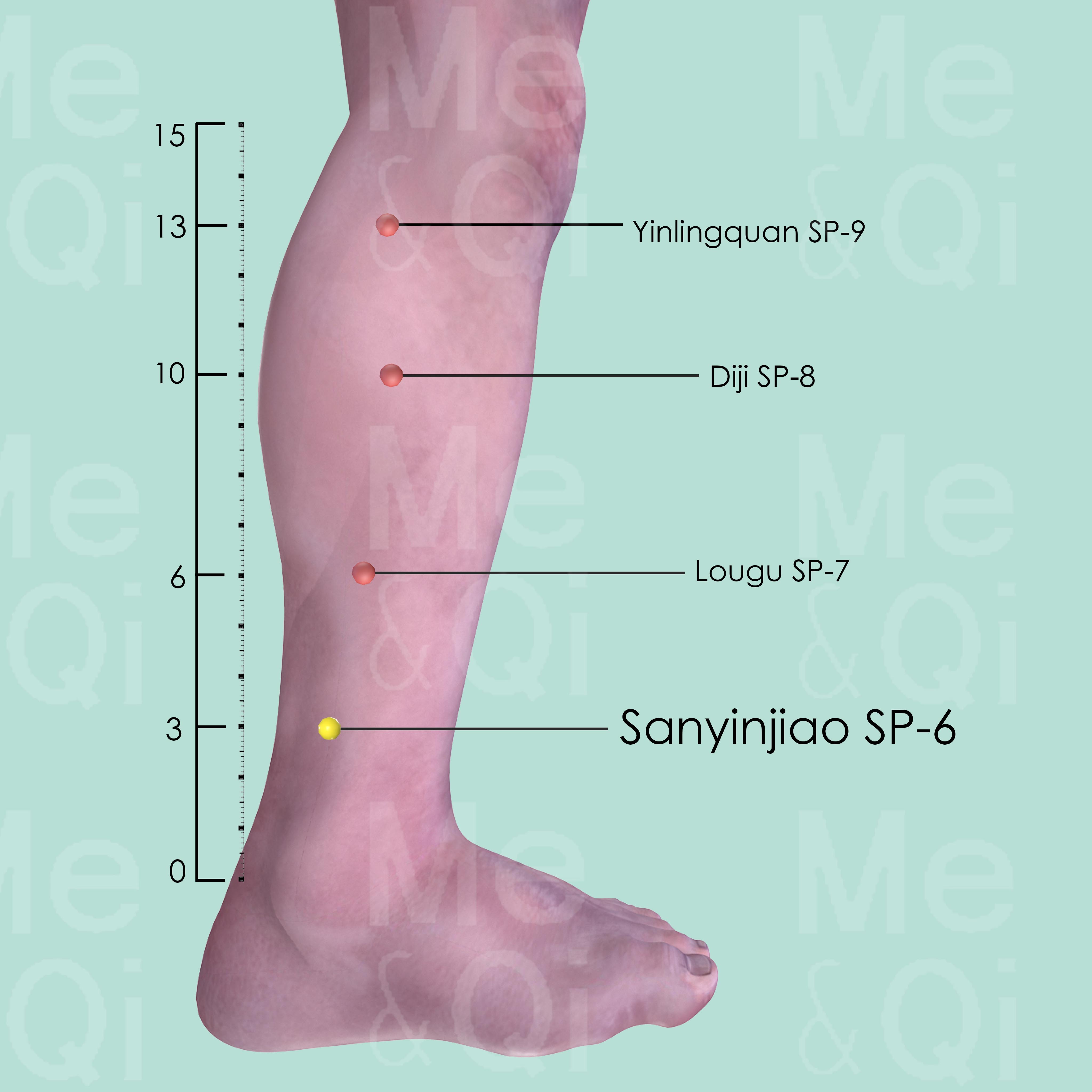
Sanyinjiao SP-6
3 cun directly above the tip of the medial malleolus, on the posterior border of the tibia, on the line drawn from the medial malleolus to Yinlingquan SP-9.
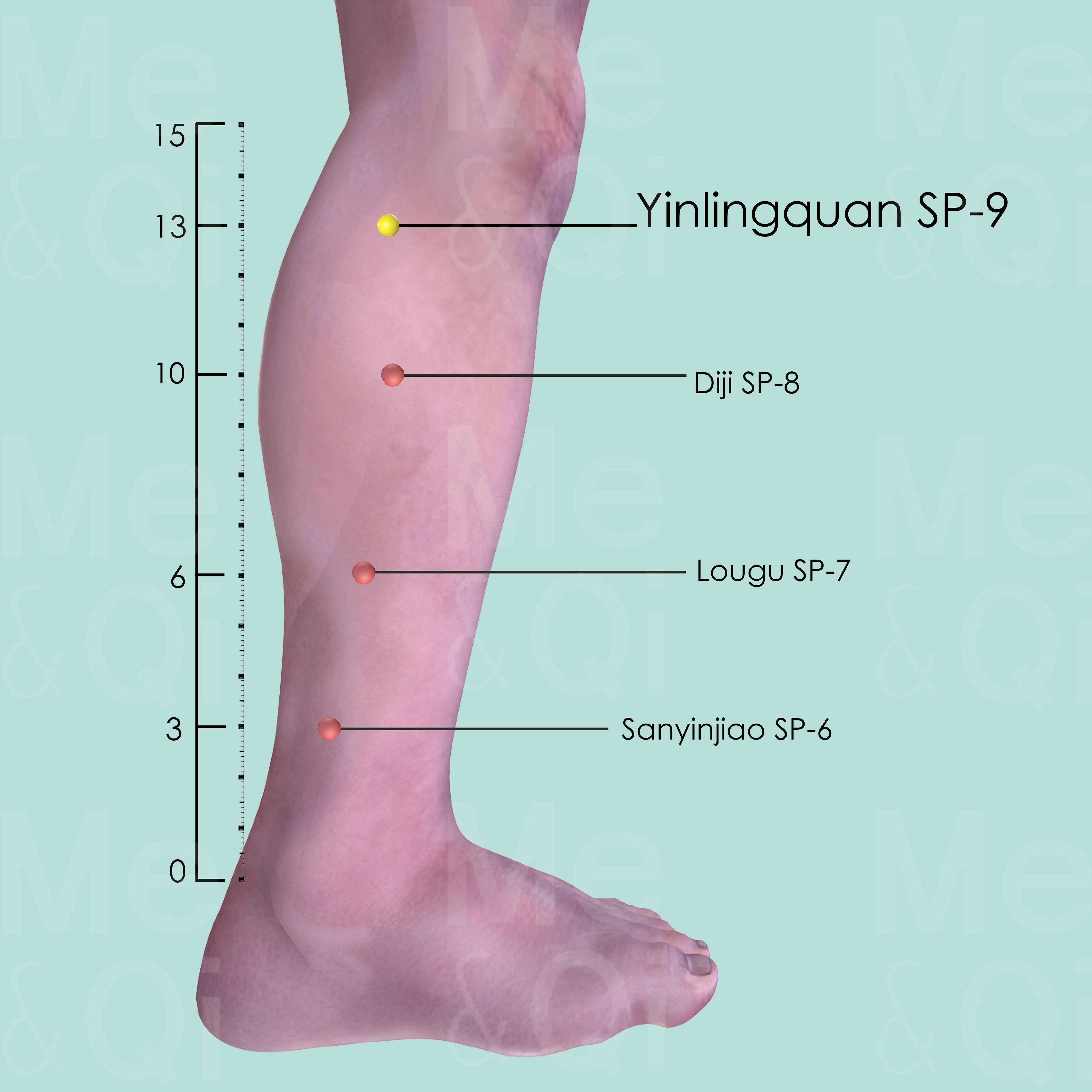
Yinlingquan SP-9
On the lower border of the medial condyle of the tibia, in the depression between the posterior border of the tibia and gastrocnemius muscle.
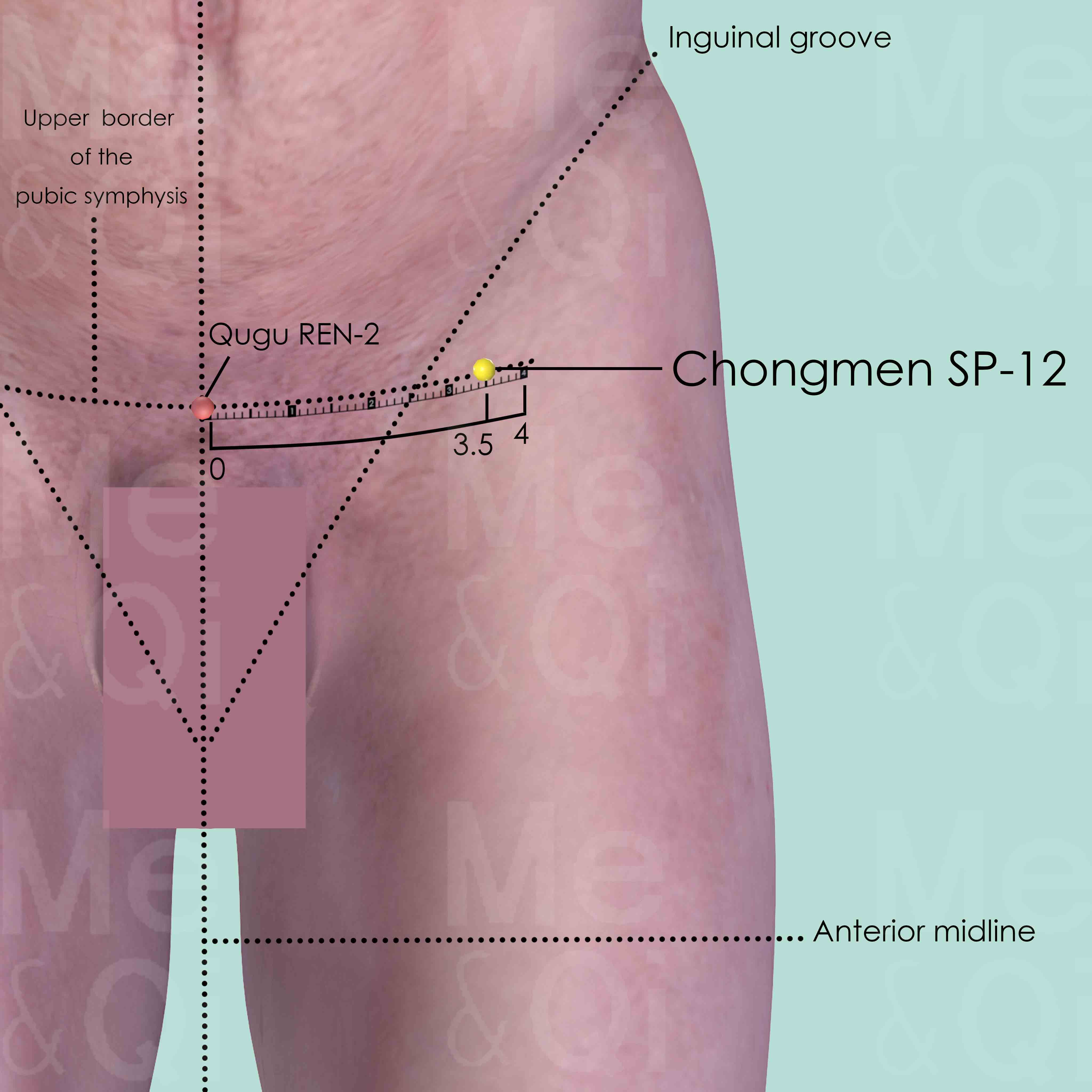
Chongmen SP-12
Lateral to the inguinal groove, on the immediate lateral side of the femoral artery, at the level of the upper border of symphysis pubis, 3.5 cun lateral to Qugu REN-2.
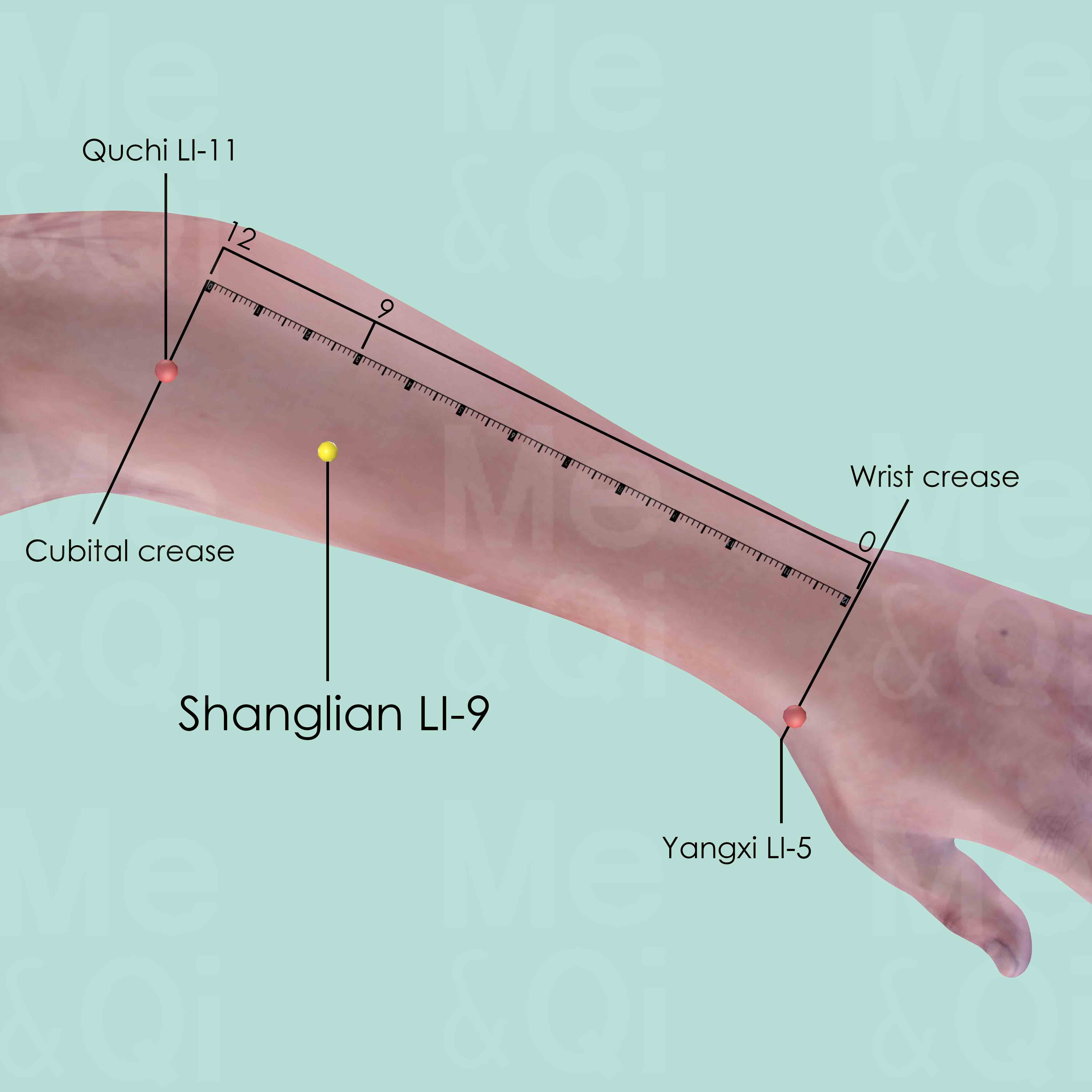
Shanglian LI-9
When a fist is made, with the ulnar side downward and elbow flexed, the point is 3 cun distal to Quchi LI-11 of the line joining Yangxi LI-5 and Quchi LI-11.
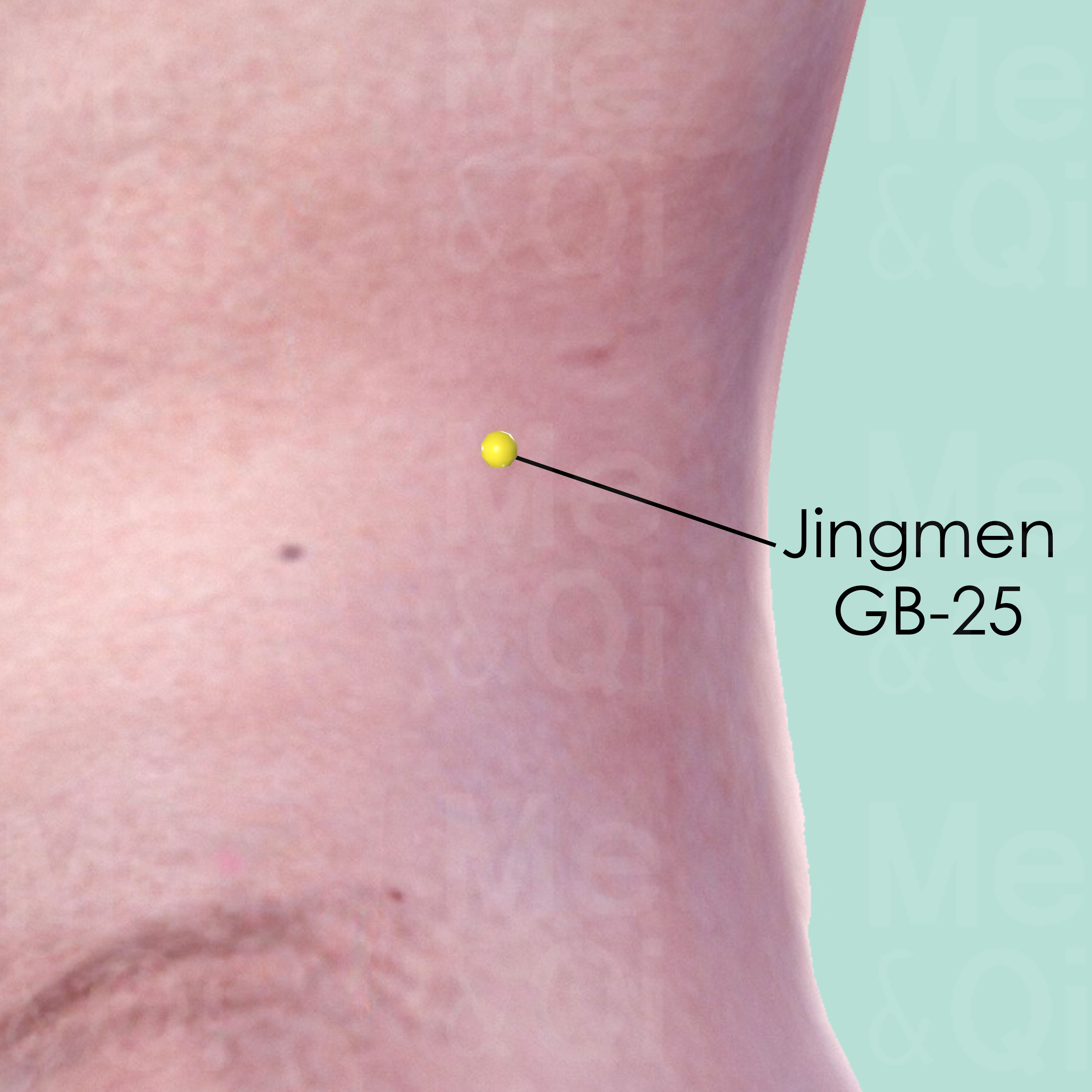
Jingmen GB-25
On the lateral side of the abdomen, on the lower border of the free end of the 12th rib.
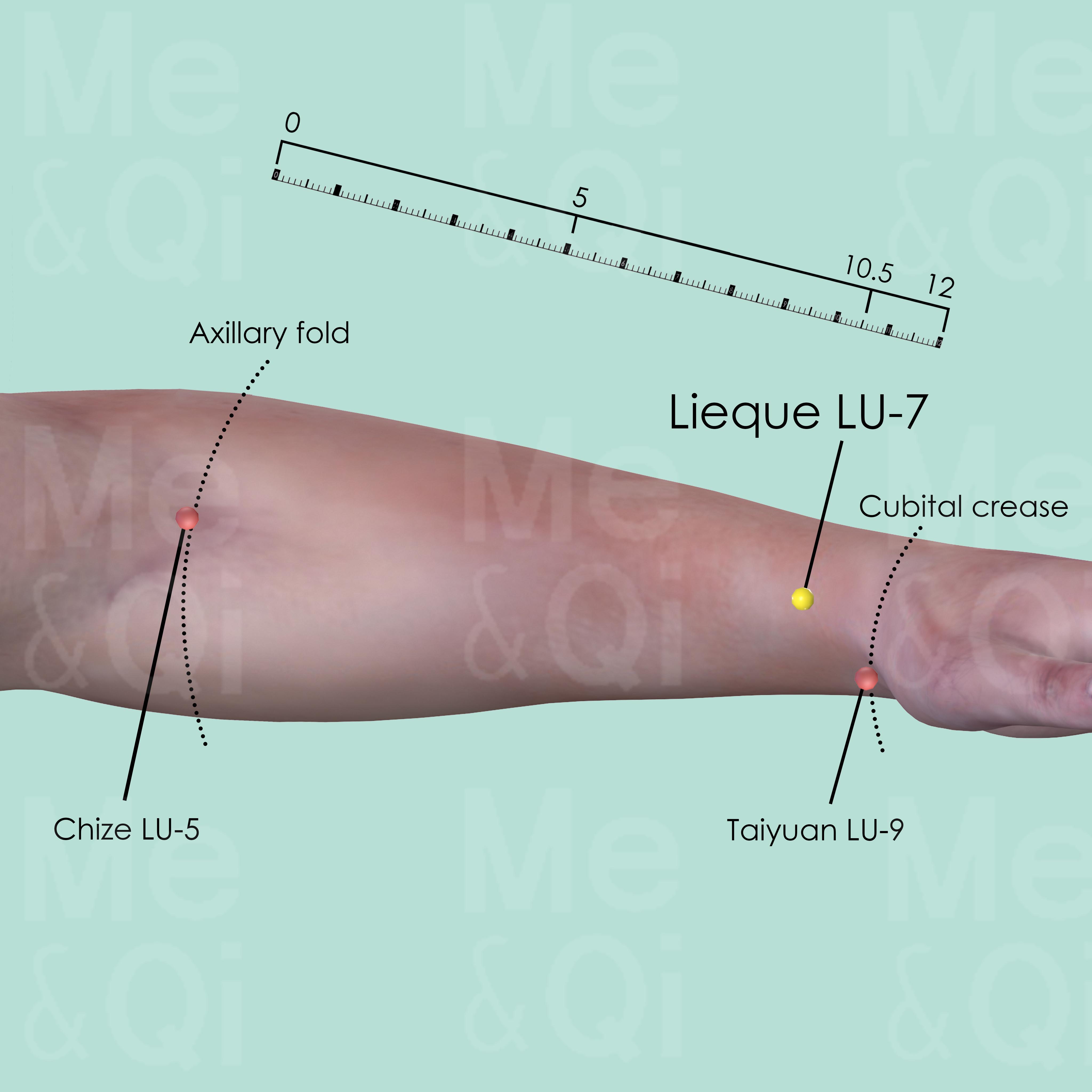
Lieque LU-7
Above the styloid process of the radius, about 1.5 cun proximal to the wrist crease (wrist joint space) in a V-shaped depression.
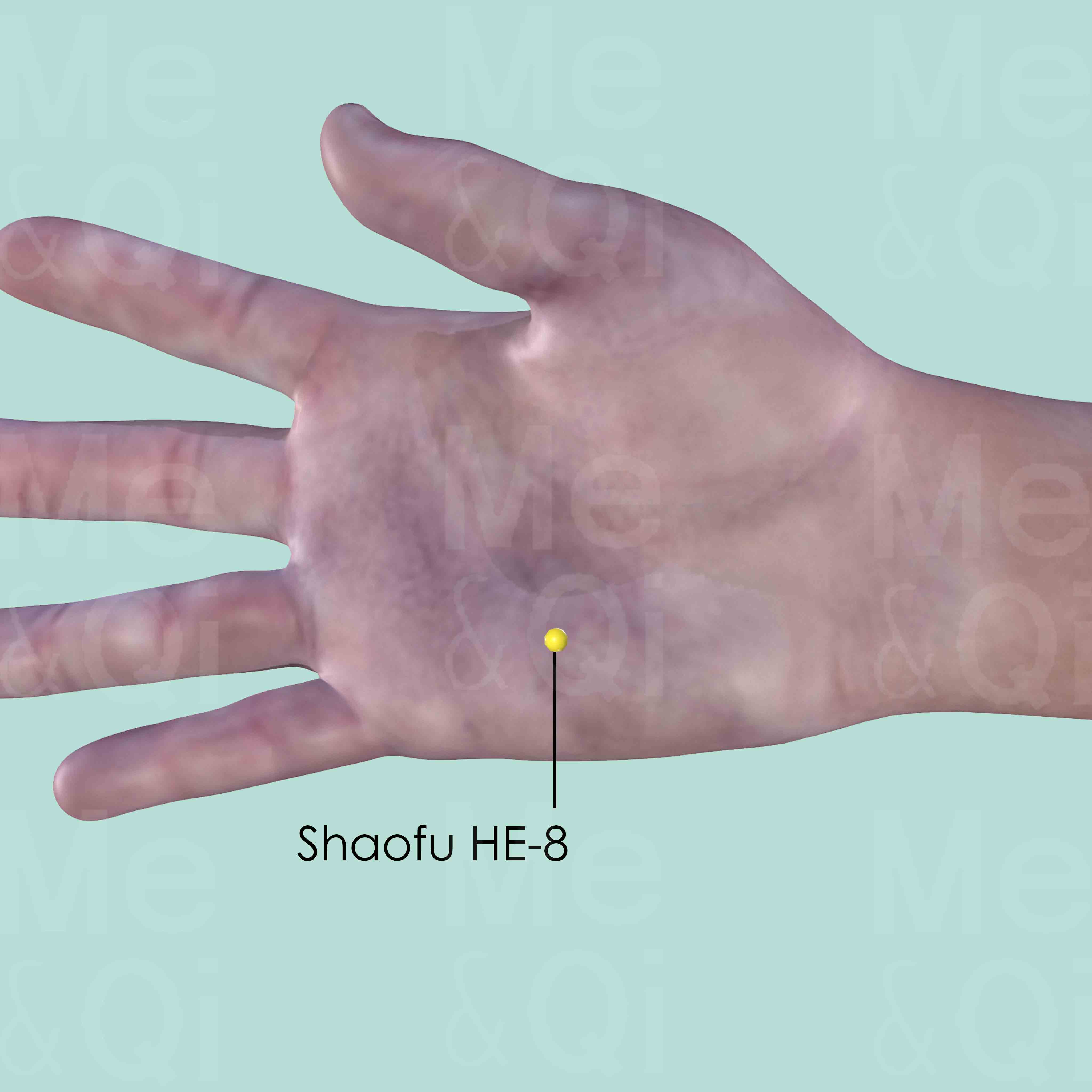
Shaofu HE-8
On the palmar surface, between the 4th and 5th metacarpal bones. When a fist is made, the point is where the tip of the little finger rests.
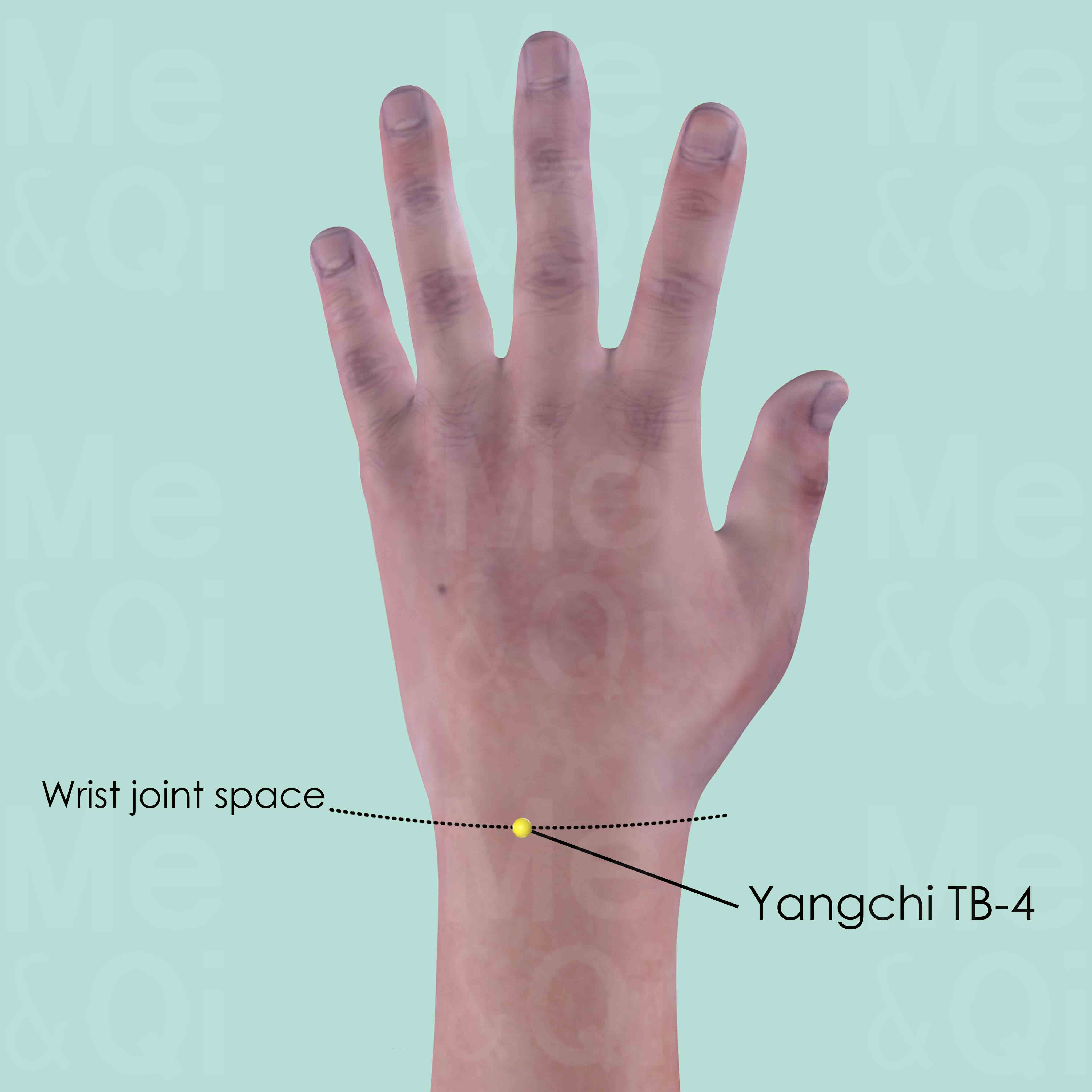
Yangchi TB-4
At the junction of the ulna carpal bones of the wrist dorsum, in the depression lateral to the tendon of extensor digitorum and extensor digiti minimi muscle.

